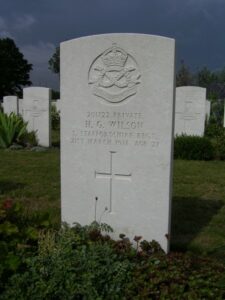Llandeilo is an ancient market town, situated in the heart of the Towy Valley, at its crossing by the A483 road. The men from Llandeilo Parish who fell during both World Wars are commemorated on wooden panels inside the Parish Church of St. Teilo. Terry Norman originally sent in the list of names to enable this page to be created, but photographs have also recently been sent in by Wyn Edwards and Les Nixon.
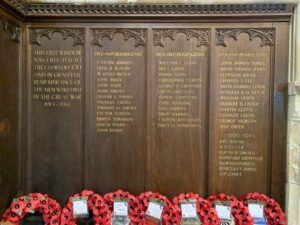
The Great War, 1914-1918
Alfred Arrowsmith, Private, 808, Welsh Regiment. Alfred was born in Camden Town, London in 1897. He had moved to Llandeilo to work at some time prior to the war, and enlisted there into the 1/4th Battalion, Welsh Regiment, which was the local Territorial Battalion, attached to 159 Brigade, 53rd (Welsh) Division. The Division landed at Cape Helles, Gallipoli, on 9 August 1915, and was immediately thrown into action, spending the next few days in isolated pockets, fighting against a Turkish counter-attack during the Battle of Sari Bair. Alfred was killed in action during the attack on Scimitar Hill on 10 August 1915, aged 18. He has no known grave, and is commemorated on the Helles Memorial, Gallipoli. Alfred is not commemorated locally.
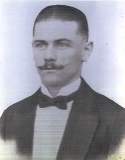
Percy Frank Barnes, Private, 201692, Welsh Regiment. Percy was the son of George and Emily Sarah Barnes, of Kings Lodge, Llandeilo, and enlisted at Carmarthen into the 1/4th Battalion, Welsh Regiment, which was a territorial Battalion, which formed part of South Wales Brigade. On the 17 April 1915 it was attached to 159 Brigade, 53rd Division and in July 1915, moved to Egypt, prior to landing at Suvla, Gallipoli on 8 August 1915. They remained here throughout a terrible campaign, which resulted in one stage of the Battalion being temporarily merged with the 1/5th Welsh due to the awful casualties suffered by both. In December 1915 they were evacuated to Egypt, where the rebuilding of the battalions began. The division remained in Egypt until early 1917, guarding the Suez Canal. Their next mission was the invasion of Palestine, but by now Percy had become ill and sadly died of sickness in Egypt on 8 July 1917, aged just 19. He is buried at Cairo War Memorial Cemetery, Egypt.

Sidney Rees Bell, Lance Corporal, 3684, Welsh Regiment. Sidney was born in 1876, the son of Rees and Ann Bell, of 3, King Street, Llandeilo. Sydney was a Tailor, and had worked at Skewen, where he married Eleanor Williams, and the couple raised their first four children there before returning to Llandeilo in 1910, moving into 3, Brynawel Terrace. Sidney served with the 4th Welsh early in the war, later transferring into the Royal Welsh Fusiliers, with the service number 38958. No more is known of Sydney’s time at war, but he was discharged from the army due to ill-health on 17 January 1918 and died at 2, Wellfield Terrace, Llandeilo due to pulmonary tuberculosis and exhaustion, which had been brought on by his war service, on 12 February 1920, aged 44. He was buried in St. David’s Churchyard, Llandilofawr. His case was recently forwarded to the CWGC as a result of my research, and he was accepted for commemoration by them on Tuesday 25 August 2020. He will be commemorated in the United Kingdom Book of Remembrance at Maidenhead unless the location of his grave can be verified.
Frederick Benjamin Bowen, Private, 29628, Royal Welsh Fusiliers. Frederick was the son of John and Mary Bowen, of Tyssil House, Llandeilo. He worked for the GWR at Ammanford prior to the war and enlisted there on 20 November 1915 into the Royal Welsh Fusiliers. Frederick landed in France on 7 July 1916 and joined the 2nd Battalion, Royal Welsh Fusiliers, on the Somme. Frederick served throughout the Somme offensive before being invalided home in February 1917. He returned to France on 20 September 1917, joining the 19th Battalion, Royal Welsh Fusiliers. The Battalion was formed in March 1915, as a Bantam Battalion, and in September 1915 became attached to 119 Brigade, 40th (Bantam) Division. They moved to France in June 1916, and served near Loos until October, when it was moved to the Somme. The Division fought on the Ancre, and remained in the area over the winter, before following the German withdrawal to the Hindenburg Line in March 1917. Their next major action was during the Battle of Cambrai, where Frederick was killed in Action on 24 November 1917, aged 22. He is commemorated on the Cambrai Memorial, Louverval, France.
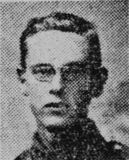
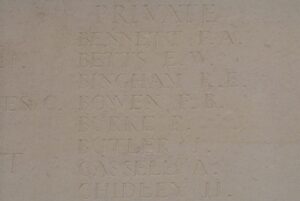
Gamaliel Bowen, Ordinary Seaman, Z/4247, Royal Naval Volunteer Reserve. Gamaliel was born on 23 January 1895, the son of John and Jane Bowen, of Panteg Villa, Llandeilo. Prior to the war he worked for the Great Western Railway, as a Checker at the Traffic Department at Pembrey. He later enlisted into the Royal Naval Volunteer Reserve on 19 June 1917, and was posted to HMS Victory III. Gamaliel was serving at the Naval Shore establishment HMS Excellent, when he became ill and died of cerebro-spinal meningitis at the Royal Naval Hospital, Haslar on 23 January 1918, aged 23. He is buried at Haslar Royal Naval Cemetery, Hampshire.
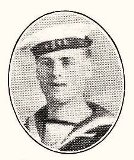
Stewart Rendal Bowen, Private, 14168, Royal Welsh Fusiliers. Stewart was the son of John and Miriam Bowen, of 4, Brisken Villa, Llandeilo. By 1911 the family had moved to 31, Maesquarre Road, Ammanford. Stewart had enlisted at Llandeilo into the Royal Welsh Fusiliers. Stewart had served in France from 5 September 1915 with one of the regular battalions of the Royal Welsh Fusiliers before being invalided home. He sadly died at Liverpool Military Hospital on 14 February 1917, aged 24. Stewart is buried at Llandeilo (Bethel) Calvinistic Methodist Chapelyard. Many thanks to W. Stuart Davies for the photograph.
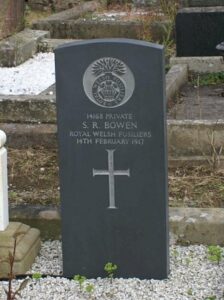
John Caleb Brick, Private, 14519, Kings Shropshire Light Infantry. John was the son of Aaron and Margaret Brick, of Providence Place, Llanwrtyd Wells. He worked as a colliery labourer at Ammanford prior to the war and enlisted at Llandrindod Wells into the 7th Battalion, King’s Shropshire Light Infantry, which was attached to 67 Brigade, 25th Division. On 28 September 1915, the Battalion landed at Boulogne and two weeks later moved to 8 Brigade, 3rd Division. The Division was at Ypres at the beginning of 1916, and the 7th KSLI saw their first major action at the Bluff and the St. Eloi craters. They moved to the Somme in June, 1916 and fought there throughout the great offensive, where John was killed in Action during the Battle of Bazentin Ridge on 14 July 1916, aged 32. He is commemorated on the Thiepval Memorial, France.
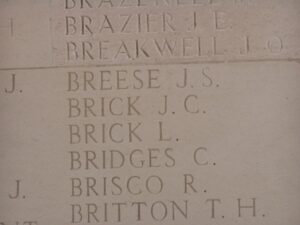
William Joseph Barry Brown, Lieutenant, Royal Flying Corps. William was the son of Richard and Margaret Brown, of 10, Great Western Terrace, Llanelli. The family had moved to 7, Church Street, Llandeilo by 1894, and Richard died before 1901. Margaret then remarried David Williams in 1902, and the family returned to Llanelli. William had served with the 1st City of London Yeomanry (Rough Riders), before volunteering to serve with the Royal Flying Corps, and was posted to Egypt, where he joined the Aerial Fighting School, 38th Training Wing. William was killed in an accident on 21 February 1918. He was 29 years old, and is buried at Cairo War Memorial Cemetery, Egypt.
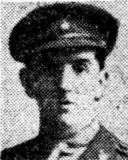
Thomas John Buckingham, Private, 3813, Welsh Regiment. Thomas was the son of John and Elizabeth Buckingham, of 31, Towy Terrace, Llandeilo. He married Elizabeth Harries in 1913 and the couple lived at Llandeilo. Thomas had enlisted at Carmarthen into the 4th Battalion, Welsh Regiment, which had formed there on 4 August 1914. Thomas died in Pembrokeshire on 11 October 1914, aged 22 and is buried at Carmarthen (St. Mary) Roman Catholic Churchyard.
Henry Chuter, Private, 10394, Welsh Regiment. Henry was born in Acton, Sussex in 1891. He was an army reservist, and re-enlisted at Llandeilo into the 1st Battalion, Welsh Regiment. At the beginning of the war, the Battalion were garrisoned in India, but were soon recalled and arrived in Plymouth on 22 December 1914. They were then attached to 84 Brigade, 28th Division and landed at Havre on 18 January 1915, moving to Ypres. The Division fought at the Second Battle of Ypres, suffering terrible casualties. Henry was Killed in Action here on 9 February 1915, aged 24. Henry is commemorated on the Ypres (Menin Gate) Memorial, Belgium. Henry is not commemorated locally.
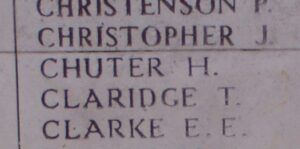
John Arthur Dade, Private, 15459, Royal Welsh Fusiliers. John was born at Nottingham, the son of Samuel and Annie Dade. Prior to the war the family resided at Pehrhiw, Trapp, where Samuel worked as a gardener. The family moved to Bank Cottage, Felinfoel after the war, but John was living at Trapp when he enlisted into the 10th Battalion, Royal Welsh Fusiliers. The battalion was formed at Wrexham during October, 1914 as part of 76 Brigade, 25th Division. They landed at Boulogne on 27 September 1915 and were then transferred to the 3rd Division. The Division was near Ypres, and the 10th RWF saw their first action during the German attacks on the Bluff and at St. Eloi Craters. In June, 1916 they moved south to the Somme, and took part in the Battles of Albert, Bazentin Ridge and Delville Wood before John was wounded. He was brought to the Casualty Clearing Station at Corbie in the Somme Valley, where he died of Wounds on 21 August 1918, aged 23. John is buried in La Neuville British Cemetery, Corbie, France.
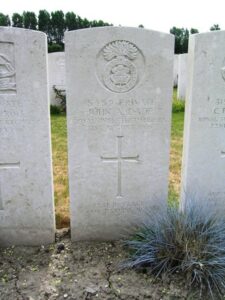
Clement Hugh Davies, Private, G/86328, Middlesex Regiment. Clement was born at Llandeilo, the son of David and Emma Jane Davies. The family later moved to 18, Eaton Crescent, Swansea, and Clement enlisted here into the Army Service Corps. He was later posted to the 17th Battalion, Middlesex Regiment, which was known as the ‘Football Battalion’. The Battalion were raised in London on 12 December 1914, and was originally attached to 100 Brigade, 33rd Division, and landed at Boulogne on 18 November 1915. Here they transferred to 6 Brigade, 2nd Division, who had been badly depleted during the Battle of Loos. After spending the winter near Loos, the Division moved to the Somme, and took part in the Battles of Delville Wood and the Ancre, and followed the German withdrawal to the Hindenburg Line in March, 1917. They then fought during the Arras Offensive, at the Battles of the Scarpe and the Battle of Arleux, and were involved later in the year at the Battle of Cambrai. Clement was killed in Action during the Battle, on 11 December 1917, aged just 19. He is buried at Lebucquière Communal Cemetery Extension. Clement is not commemorated at Llandeilo.
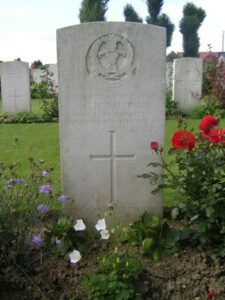
Daniel Ivor Davies, Driver, W/3511, Royal Field Artillery. Daniel was the son of Morgan and Rachel Davies, of Kenwyn Cottage, Ffairfach, Llandeilo. He had enlisted at Swansea into the Royal Field Artillery, and served in France with the 38th (Welsh) Division from 23 December 1915. At some time in 1918 Daniel was transferred to the 223rd Brigade, Royal Field Artillery, which was attached to the Home Counties Division. Daniel Died of Sickness at home on 13 November 1918, aged 24, and is buried at Ffairfach (Tabernacle) Congregational Chapelyard. His brother in law, Walter Rochford, also fell.

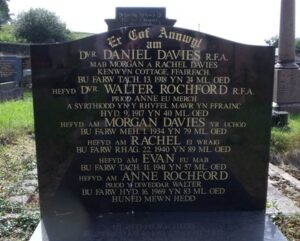
John Davies, Lance Corporal, 1628, Welsh Guards. John was born at Caio, and was the adopted son of Thomas and Elizabeth Davies, of Cefn Tir Esgob, Llandeilo. He enlisted at Ammanford into the 1st Battalion, Welsh Guards, which had been formed early in 1915 and attached to 3 Guards Brigade, Guards Division. This Division has the distinction of being formed in France in August 1915. The various Guards units that had been with other Divisions were withdrawn to be brought together to create this fine formation. It remained on the Western Front throughout the war and saw its first major action during the Battle of Loos on 25 September 1915, remaining in the area during the coming months, where they also fought in the subsequent Action of Hohenzollern Redoubt. The guards then had a spell at Ypres, holding the Canal Bank sector until the end of July 1916. John was killed here on 17 July 1916, aged 20. He is buried near Ypres, at Brandhoek Military Cemetery, Belgium.

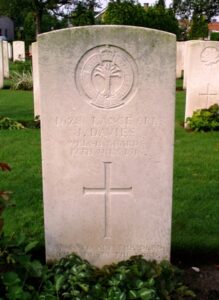
John Davies, Private, 21477, South Wales Borderers. John was the son of Thomas and Anne Davies, of Minyrafon, Blaenau Road, Llandeilo. On 23 February 1915 he enlisted at Colwyn Bay into the 10th Battalion, South Wales Borderers, to serve alongside his brother, William. The battalion was attached to 115 Brigade, 38th (Welsh) Division and during the summer of 1915 moved to Winchester to train before departing for France in December 1915. The conditions endured by the Welshmen in camp during 1915 were pretty dire at times, with much of their accommodation being tented camps, and John became ill during the summer. On 23 July he began coughing up blood and was hospitalised before being diagnosed as suffering from tuberculosis and he was discharged with a pension on 22 October 1915. John spent the remainder of his life in and out of hospital, and died at Cimla Military Hospital on 26 April 1918 aged 34. His body was brought home for burial with full military honours in Rhosmaen (Bethel) Cemetery. His case has recently been submitted to the CWGC on 8 July 2015 following research carried out by myself, as he was not commemorated as a casualty of war. He was finally accepted for commemoration by them on Friday 30 October 2015. He will be commemorated in the United Kingdom Book of Remembrance until the location of his grave is verified.
John Gabriel Davies, Private, 45492, Welsh Regiment. John was the son of Ann Davies, of Dryslwyn Castle Inn, Golden Grove, and enlisted at Llandeilo into the army. He was posted to the 2nd Battalion, Welsh Regiment, which had been in France since the outbreak of war, attached to 3 Brigade, 1st Division. The Division had fought in the retreat from Mons to the Marne, before taking part in a gallant stand at First Ypres. After a hard first winter on the Western Front, the Division fought at the Battle of Aubers in May 1915, and then at the Battle of Loos in September. In June, 1916 the Division were on the Somme, and fought through the offensive, at the Battles of Albert, Bazentin and Pozieres, where John was wounded in Action. He was evacuated to the Casualty Clearing Station at Puchevillers, where he sadly died of Wounds on 27 August 1916, aged 41. John is buried at Puchevillers British Cemetery, France.
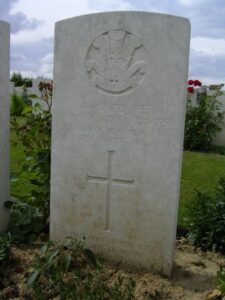
Oliver Cromwell Davies, Private, 38376, Welsh Regiment. Oliver was the son of David and Harriet Davies, of Llandeilo. Oliver enlisted at Ammanford into the 8th Battalion, the Welsh Regiment, which had formed at Cardiff during August 1914, becoming attached to 40 Brigade, 13th Western Division. The Division sailed for the Mediterranean in June 1915, and on 4 July 1915 landed at Cape Helles, Gallipoli, relieving the 29th Division. From there, the Division took part in several actions, most notably The Battle of Sari Bair and the Battle of Russell’s Top. In January 1916 the Division was evacuated from Gallipoli and moved to the Suez Canal Defences near Port Said, and on 12 February they moved to Mesopotamia, to attempt to relieve the Siege of Kut el Amara. Oliver Died of Sickness on this campaign, on 30 June 1916, aged 21. He is buried in Amara War Cemetery, Iraq. Oliver’s father David died on 20 June 1917. His mother had remarried by the time the Imperial War Graves Commission began contacting relatives of the fallen, and resided at 24, Towy Terrace, Llandeilo, as Mrs Harriet Edwards.
Thomas Davies, Company Sergeant Major, 3002, Welsh Regiment. Thomas was the Husband of Agnes Davies, of Hanover House, Latimer Road, Llandeilo. He enlisted at Llandeilo into the 1/4th Battalion, Welsh Regiment, which formed part of South Wales Brigade. On 17 April 1915 it was attached to 159 Brigade, 53rd Division and in July 1915, sailed to Egypt, moving to Suvla, Gallipoli on 8 August 1915. The Division was plunged immediately into heavy fighting, and Thomas was Killed in Action on 10 August 1915 aged 43. He is commemorated on the Helles Memorial, Gallipoli.
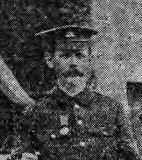
Thomas Morgan Davies, Private, 288053, Welsh Regiment. Thomas was the son of John and Elizabeth Davies, and the Husband of Sarah Elizabeth Louisa Davies, of 5, North Bank, Llandeilo. He enlisted at Swansea into the 1/6th Battalion, Welsh Regiment, which moved to France on 29 October 1914, and moved to Lines of Communication. On 5 July 1915 the battalion became attached to 84 Brigade, 28th Division, and fought with them at the Battle of Loos. On 23 October 1915 they moved to 3 Brigade, 1st Division, and on 15 May 1916, became the Pioneer Battalion to the Division. The Division fought throughout the bulk of the Somme Offensive in 1916. They remained in the area over the winter, and in March 1917 followed the German withdrawal to the Hindenburg Line. The Division then moved north to the Belgian Coast to prepare for a planned offensive there, but the Battle of Third Ypres had by then ground to a halt in the mud, and so they were sent to Ypres to reinforce the British attack, fighting in the Second Battle of Passchendaele. The following spring, the German Spring Offensive had stormed through the British lines on the Somme. They then focussed their desperate next phase on the British Lines in Flanders, and the 1st Division was caught up in the maelstrom at Estaires, and the forced retreat to Hazebrouck and Bethune. Thomas was wounded while trying to repair an acetylene cylinder, and died on 5 August 1918, aged 32. He is buried at Sailly-Labourse Communal Cemetery Extension, France.
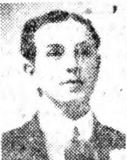
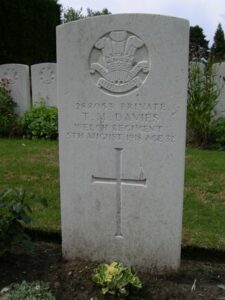
William Henry Davies, Company Quartermaster Sergeant, 3001, Welsh Regiment. William was the husband of Margaret Davies, of Penbryn, Thomas Street, Llandeilo. He worked as a court bailiff and was a long serving member of the 4th Battalion, Welsh Regiment prior to the outbreak of war. He mobilised with the 4th Welsh following the declaration of war, but due to his health did not embark for service overseas in 1915. He died at home on 14 September 1917, aged 43. His death was not deemed to have been caused by his military service, so William is not commemorated by the CWGC.
John Victor Duffus, Private, 39125, South Wales Borderers. John was born at Llandeilo in 1897, the son of John and Anne Duffus, and enlisted at nearby Ammanford into the Welsh Horse Yeomanry. He was posted to France, where he joined the 1st Battalion, South Wales Borderers, which had been there since the outbreak of war, attached to 3 Brigade, 1st Division. The Division had taken part in the retreat from Mons to the Marne, and had fought at First Ypres, when the Germans attempted a sweep westward through Belgium to the Channel Coast. The BEF stopped them again, at heavy cost. The Division remained in Flanders over the winter, and in 1915 fought at Aubers in May, and the Battle of Loos in September onwards. In June, 1916 they moved to positions on the Somme, and fought through the Somme Offensive, at Albert, Bazentin, Pozieres, Flers-Courcelette and Morval, where John was wounded. He Died of his Wounds on 23 September 1916, aged 18, and is commemorated on the Thiepval Memorial, France. His brother Harold had died at Llandeilo in 1915, aged just 17.
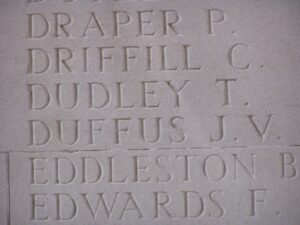
William Alfred Edwards, Gunner, 161082, Royal Garrison Artillery. William was the son of John and Rachel Edwards, of 46, Wind Street, Ammanford, and the Husband of Mary Ann Edwards, of Ynysdawelog, Pantyffynon. He enlisted at Llandeilo into the Royal Garrison Artillery, and served with their 170th Siege Battery. The Battery was at Ypres during the Battles of Third Ypres, and William was killed in action there on 9 November 1917, during the Second Battle of Passchendaele. He was 25 years old, and is buried at Ypres Reservoir Cemetery, Belgium.
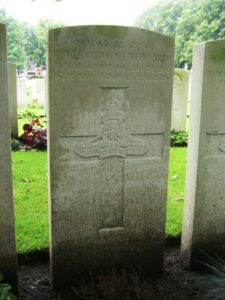
Thomas Edwards, Private, 11821, Welsh Regiment. Thomas was the son of Rees and Elizabeth Edwards, of Chapel House, Llandeilo. He enlisted at Ammanford on 19 August 1914 into the 8th Battalion, Welsh Regiment. He was discharged as medically unfit soon after, and possibly died on 26 December 1918, aged 23. Thomas is not eligible for commemoration by the CWGC, as his death cannot be proved to be linked to his war service.
Archibald Carlisle Melbourne Emlyn, Ordinary Seaman, Mersey Z/4696, Royal Naval Volunteer Reserve. Archibald was born at East St Kilda, Melbourne, on 14 November 1899, the son of John Emlyn and Elizabeth Emlyn (nee Gwillym). His mother, was from Llandeilo, but had moved away from the town while a teenager to work as a servant at Swansea, and had married John Emlyn before the family migrated to Australia at some time prior to 1885. Following the death of John Emlyn in 1913 the family returned to Wales, moving to 5, Bedford Street, Rhyl. Archibald enlisted into the Royal Naval Volunteer Reserve, and was posted to the naval base HMS Victory II. He died of disease on 22 January 1918, aged 18, and is buried in Rhyl Town Cemetery. Archibald is not commemorated locally.
Arthur Richard Evans, Private, 29799, Gloucestershire Regiment. Arthur was born at Felinwen on 12 August 1885, the son of Benjamin Robert Evans and Mary Evans (née Davies). He worked at Llanwonno prior to the war, and married Millicent Mary Morton in 1910. He enlisted at Cardiff into the 8th (Service) Battalion, Gloucester Regiment, which was attached to 57 Brigade, 19th (Western) Division. The Division crossed to France during July 1915, and moved to positions near Loos, where it took part in the opening attack of the Battle of Loos on 25 September 1915. The following year the Division moved to the Somme, where it took part in the second wave of the attack on Ovillers-La Boiselle on 1 July, capturing the village at heavy cost. It then fought through the Somme Battles of Pozières and the Ancre in 1916. In 1917 the Division moved to Ploegsteert, taking part in the Battle of Messines. It then moved further north to positions around Ypres. Arthur was killed here on 3 September 1917. He was buried at Railway Dugouts Burial Ground, Belgium, but his original grave was destroyed by shellfire, so today he is commemorated on a Special Memorial within the cemetery. Arthur does not appear to be commemorated locally, although his brother David John Evans, who died in 1920, is.
Charles Evans, Private, 6246, Welsh Regiment. Charles was born at Llandeilo in 1881 and was a pre war regular with the 1st Battalion, Welsh Regiment. The battalion was in India at the outbreak of the war, before being recalled to Britain, and arrived in Plymouth on 22 December 1914. They were then attached to 84 Brigade, 28th Division and landed at Havre on 18 January 1915, and rushed to Ypres, where they fought at Second Ypres, suffering terrible casualties. Charles was killed in Action during Second Ypres on 26 March 1915, aged 34, and is buried at Dranoutre Churchyard. Charles is not commemorated at Llandeilo.
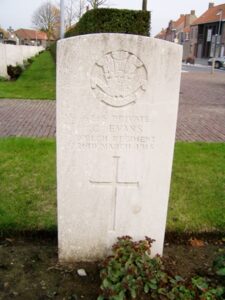
David John Evans, Private, 114325, Royal Army Medical Corps. David was the son of Benjamin Robert and Mary Evans (née Davies), of Capel Isaac, Llandeilo. He worked at Llanwonno prior to the war and married Beatrice Mary Smith in 1909. The couple lived in 91, Alfred Street, Roath Park, Cardiff. He enlisted at Cardiff into the Royal Army Medical Corps, and served with their 10th Ambulance Train. David sadly died after the war had ended, on 31 August 1920 aged 39, and is buried at Cardiff (Cathays) Cemetery. His brother Arthur Richard Evans was killed at Ypres in 1917.
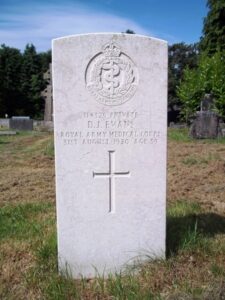
Edgar Emlyn Evans, Guardsman, 25838, Grenadier Guards. Edgar was the son of George and Sarah Evans. The family had lived at Sarah’s native Llandeilo for several years before moving to Gwalia, Llandebie. Edgar enlisted at Ammanford into the 2nd Battalion, Grenadier Guards, which had been in France with the 3rd Division since the Battle of Mons, and had fought through the retreat to the Aisne. They had fought at First Ypres, and in August 1915 were attached to the newly formed 3rd Guards Brigade, Guards Division. The Division fought through the Battle of Loos, then at Flers and Morval during the 1916 Somme Battles, and saw much action at Third Ypres. They fought during the Battle of Cambrai and were in the area when the German Spring Offensive was launched on 21 March 1918. Edgar was killed in Action during this traumatic period, on 4 April 1918, aged 25, and is buried at Bucquoy Road Cemetery, Ficheux, France.

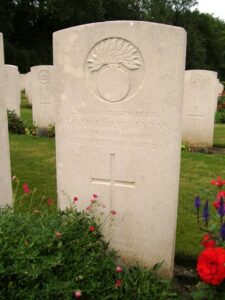
John Evans, Private, 45037, Welsh Regiment. John was the son of John and Harriet Evans, of 3, South Bank Llandeilo. His parents later resided at Llethyfagwyren, Llansadurnen, Llanwrda. John enlisted at Ammanford into the army and in 1916 was posted to France, joining the 2nd Battalion, Welsh Regiment, which had been in France as part of 3 Brigade, 1st Division since the outbreak of war. In June 1916 the Division were on the Somme, and fought through the offensive, at the Battles of Albert, Bazentin and Pozieres, Flers and Morval. They followed the German withdrawal to the Hindenburg Line in March 1917 and were then moved to the Flanders Coast to prepare for a planned offensive. However, by this time the Passchendaele Battles had ground to a halt in the mud, and the Division was called to take part in the offensive at Ypres. They fought during the Second Battle of Passchendaele, where the village was finally taken, and remained in Flanders over the winter. The following year saw the focus of the German Spring Offensive hit Flanders, and the Division fought through the desperate battles of Estaires, Hazebrouck and Bethune. They then moved to the Arras sector, and fought at the Battle of Drocourt-Queant, then moved forward to fight at the Battle of Épehy. John was Killed in Action soon after, on 25 September 1918, aged 36. He is buried in Roisel Communal Cemetery Extension, France.
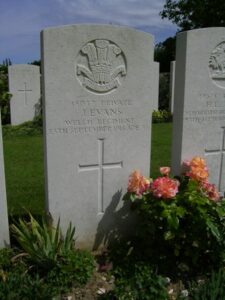
Joseph Evans, Private, 9132, Royal Welsh Fusiliers. Joseph was the son of John and Margaret Evans, of Drefach, Llandeilo. He had served with the 3rd Volunteer Battalion, Welsh Regiment for three years around the turn of the century before enlisting Cardiff on 23 June 1906 into the 2nd Battalion, Royal Welsh Fusiliers. Joseph was recalled to the battalion from the Army Reserve after the outbreak of war. The battalion landed at Rouen on 11 August 1914. On 22 August they became attached to 19 Brigade, which was under independent control, and fought at the retreat from Mons to the Marne. The professional soldiers of the BEF stopped the German Advance in its tracks at the Marne, and followed their withdrawal to the Aisne, where another Battle was fought. Now that the German advance toward Paris had been stopped, 19 Brigade was attached to the 6th Division, and moved to Ypres, where it remained until 31 May 1915, when it was transferred to the 27th Division, and fought at Second Ypres. On 19 August they moved to the 2nd Division, and fought with them throughout the Battle of Loos. On 25 November they moved again, to the 33rd Division, and it was during the first winter with this new Division that Joseph was wounded on 17 January 1916. He was brought to a Casualty Clearing Station at Bethune, where he died of Wounds on 29 January 1916, aged 30. Joseph is buried at Bethune Town Cemetery, France.
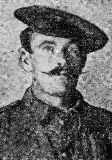
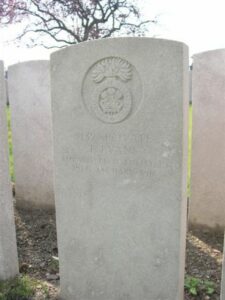
Thomas Evans, Private, 2057, Royal Army Medical Corps. Thomas was born at Llandeilo, the son of Thomas and Caroline Evans. The family had moved to Church Street, Cwmgors by 1900, and Thomas worked as a miner at Gwaun-cae-Gurwen prior to enlisting at Swansea into the Royal Army Medical Corps. He was posted to the 3rd Welsh Field Ambulance, which had been formed on 14 August 1914, and attached to the 53rd (Welsh) Division. During July 1915 the Division sailed from Avonmouth for Egypt, and then from Egypt they landed at Gallipoli on 8 August 1915. It was soon after landing that Thomas was wounded, and he was moved to a Hospital Ship where he died of Wounds on 15 August 1915, aged 21. Thomas was buried at sea, and so is commemorated on the Helles Memorial, Gallipoli. He is not commemorated at Llandeilo.
William Evans, Sergeant, 320117, Welsh Regiment. William was born in Llandeilo, the son of Thomas and Mary Evans. The family later moved to 11, West End, Llanelli. He enlisted at Carmarthen into the Pembroke Yeomanry, which assembled at Tenby in August 1914 as part of the South Wales Mounted Brigade. In November, the Battalion were dismounted and moved to Egypt and landed during March 1916, where they were absorbed into the 4th Dismounted Brigade. On 2 February 1917 the Battalion were merged with the Glamorgan Yeomanry to form the 24th Battalion, Welsh Regiment, attached to 231 Brigade, 74th (Yeomanry) Division. William fought with the Division throughout the Palestinian Campaign, at the Battles of Gaza and the capture of Jerusalem, and then in 1918 fought in the Jordan Valley, where William was killed in Action on 9 March 1918 aged 24. He is buried at Jerusalem War Cemetery.

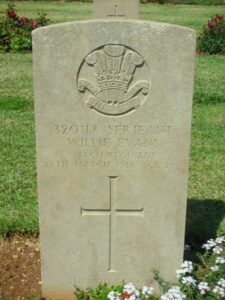
Price Gibby, Corporal, 40724, Cheshire Regiment. Price was born at Dinas Cross, the son of David and Magdalen Gibby, latterly of the Royal Oak Newport. He worked and lived at Llandeilo prior to the war, and enlisted at Ammanford into the army. Price was posted to France, probably early in 1918, joining the 15th Service Battalion, Cheshire Regiment, a Bantam Battalion which formed part of 105 Brigade, 35th Division. The Division first fought at the opening stage of the Somme Battle, then during the Battle of Passchendaele and Battles of 1918 during the German Offensive. Price was killed in Action on 4 July 1918, aged 21. He is buried at Westoutre British Cemetery, Belgium.
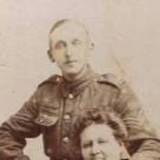
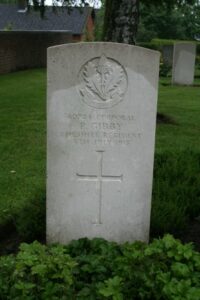
Daniel Ginn, Private, 126146, Machine Gun Corps. Daniel was the son of William and Elizabeth Ginn, of Cefn Brisken, Llanfynydd. He had worked as a waggoner at Cwmcerrig Farm, Talley for several years prior to the war before marrying Elizabeth Hughes, of 32, Towy Terrace, Ffairfach, Llandeilo. Daniel enlisted at Ammanford into the Welsh Regiment, and was posted to the 59th Battalion, Machine Gun Corps, which was attached to the 59th Division. The Division had served in Ireland since April 1916 and in January 1917 moved to England preparatory to a move to France in February. They then followed the German withdrawal to the Hindenburg Line in March, and fought at Third Ypres, at the Battles of the Menin Road and Polygon Wood. In November they moved south, and took part in the Battle of Cambrai, and remained in the area over the winter of 1917/18. The German Spring Offensive hit the area on 21 March 1918, and the Machine Gunners were the first troops hit. Daniel was killed in Action on 21 March 1918, aged 23, and is commemorated on the Arras Memorial, France. Elizabeth married Thomas Roderick in 1919, and died in 1983. Her second husband Tom had served with the Royal Welsh Fusiliers in Salonika, before being invalided from the army with malaria in 1916.
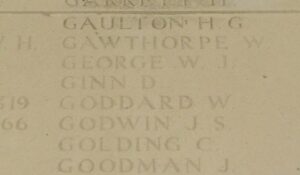
Christopher Thomas Green, Private, 54496, Welsh Regiment. Christopher was the Husband of Clara Green, of Nelson Cottage, Cilgwyn, Llangadock. He had moved his family into the area to work at Llandeilo Limeworks. Christopher enlisted at Ammanford into the army. He was posted to the 19th Battalion, Welsh Regiment, which was in France, as the Pioneer Battalion to the 38th (Welsh) Division, and had been in France since December 1915. The Division moved to positions near Armentieres, where they remained until moving to the Somme in June 1916, where they captured Mametz Wood. It took almost a week for the Division to capture the wood, at a great cost in lives, and they were taken out of action and moved to Ypres to rebuild. Christopher was killed in Action when his battalion was working near the Yser Canal at Boesinghe on 24 January 1917, aged 31. He is buried in Bard Cottage Cemetery, Belgium.
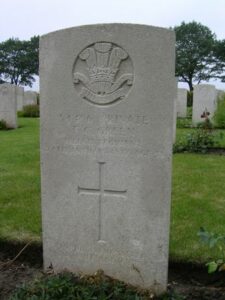
George Prosser Griffiths, Private, 245050, Loyal North Lancashire Regiment. George was the son of Thomas and Rachael Griffiths, of 1, Wellfield Terrace, Llandeilo. He worked as a Draper prior to the war and enlisted at Cardiff on 2 December 1915 into the army. He landed in France on 9 February 1917 with the 2/5th Battalion, Loyal North Lancashire Regiment, which was attached to 170 Brigade, 57th Division. The Division fought at Third Ypres, during the Second Battle of Passchendaele. This is where George was killed in Action, on 26 October 1917, aged 35. He is buried at Cement House Cemetery, Belgium.
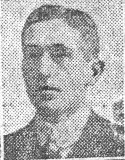
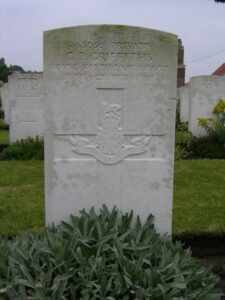
Gwynfred Ellis Griffiths, Private, 43837, Wiltshire Regiment. Gwyn was the son of Joseph and Ann Griffiths, of The Post Office, Croesgoch, Pembrokeshire. He worked at Llandeilo prior to the war and married Alicia Davies at Llandeilo in 1908, the couple setting up home at Wedgwood House, Llandeilo. Gwyn enlisted at Ammanford into the army, and was posted to France at some time in 1916, where he joined the 1st Battalion, Wiltshire Regiment, which was had been there since the outbreak of war, attached to 7 Brigade, 3rd Division. The Division had fought throughout the Somme offensive, and at the end of October 1916 moved to Ploegsteert. In 1917 the Division fought through Third Ypres, at Messines and Pilckem, and then moved to Givenchy then Bullecourt. They were in positions north west of Bapaume when the German Spring Offensive hit on 21 March 1918. After suffering heavy casualties, they moved to Flanders at the end of March, but were again hit by the German Offensive in Flanders. Here they fought at Estaires, Messines, Bailleul and Kemmel, then moved to the Aisne to rebuild. Again, they were hit by a German Offensive on the Chemin des Dames at the end of May, and again they held firm. On 21 June 1918 the Battalion moved again, to 110 Brigade, 21st Division, and they fought with the Division during the drive through the Hindenburg Line. Gwynfred was killed in Action on 8 October 1918, aged 39. He is buried at Bois-Des-Angles British Cemetery, Crevecoeur-Sur-L’escaut, France.
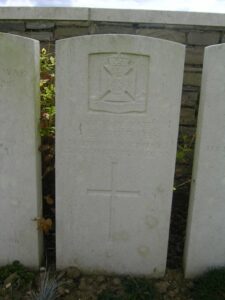
William Hopkin Griffiths, Private, 285315, Welsh Regiment. William was born in Llandeilo, the son of Thomas Saunders and Eda Griffiths, of 45, New Road, Llandeilo. After Eda’s death, the family moved to 5, Rock Terrace, The Green, Pembroke. A Chemist by trade, William enlisted at Pembroke into the 1st Battalion, Monmouthshire Regiment, which had served in France since February 1915, attached to the 28th Division, and had fought at Second Ypres and at the Battle of Loos. William transferred at some time to the 13th Battalion, Welsh Regiment, which was attached to 114 Brigade, 38th (Welsh) Division, and had just arrived on the Western Front, serving near Armentieres, before being moved to the Somme in June, 1916, where they took part in the Battle of Mametz Wood, the initial assault of which began on 7 July 1916. It was almost a week before the Division cleared the wood, after suffering terrible casualties, and they were sent to Ypres to rebuild. They were at Ypres, north of Boesinghe, when they took part in the Battle of Pilckem, and then the Battle of Langemarck, where William was killed in Action on 23 August 1917, aged just 20. He is commemorated on the Tyne Cot Memorial, Belgium.
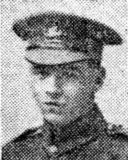
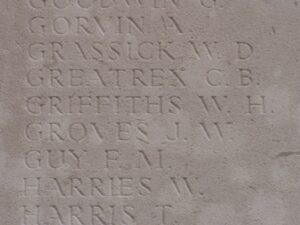
Cyril George Harding, Lieutenant, Royal Air Force. Cyril was the son of Francis Samuel and Florence Annie Harding, of Church House, Stone, Staffordshire. His ties with Llandeilo are unclear, but Cyril served with 103 Squadron, Royal Air Force, which was formed during the First World War at Beaulieu in Hampshire, equipped with the DH9 single-engine biplane. In May 1918, 103 Squadron was transferred to France and for the rest of the war flew reconnaissance and day bombing operations on the Western Front. Cyril had returned home sometime before the end of the war, as he was ill. He sadly Died of Sickness at Steyning in Sussex on 9 November 1918, aged just 19, and is buried at Stone (All Saints) Churchyard, Staffordshire.
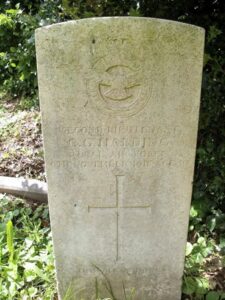
Daniel Harries, Lance Corporal, 5970, Royal Warwickshire Regiment. Daniel was the son of David and Mary Harries, of Plasnewydd, Manordilo, and had enlisted at Llandeilo into the Welsh Regiment. He was later posted to the 2/7th Battalion, Royal Warwickshire Regiment, which was attached to 182 Brigade, 61st Division from August 1915 onwards, and left for the Western Front on 21 May 1916. They saw their first action at the Battle of Fromelles on 19 July 1916, which was a disastrous diversion for the Somme attack. Daniel was killed in Action during the attack, on 19 July 1916, aged 22, and is one of many men of the Division whose graves were never identified, and are commemorated on the Loos Memorial, France. A recent discovery of mass graves at Fromelles has led to over 100 Allied soldiers being exhumed and re-buried at Pheasant Wood Cemetery, Fromelles. The identification of these bodies is ongoing.

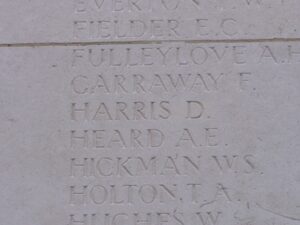
David Harries, Sergeant, 267427, Royal Warwickshire Regiment. David was the son of Thomas and Mary Harries, of Gurrey Bank, Llandeilo, and enlisted into the Welsh Regiment. He was later transferred into the 2/7th Battalion, Royal Warwickshire Regiment, which was attached to 182 Brigade, 61st Division from August 1915 onwards, and left for the Western Front on 21 May 1916, relieving the 38th (Welsh) Division at Fromelles. They saw their first action at the Battle of Fromelles, on 19 July 1916, which was a disastrous diversion for the Somme attack, and then followed the German retreat to the Hindenburg Line in March 1917, capturing Chaulnes and Bapaume. Later in the year the Division fought at Third Ypres in the Battle of Langemarck, then moved south, and fought in the Battle of Cambrai. In March 1918 the Division was caught up in the German Spring Offensive, and David was killed in Action on the second desperate day, on 22 March 1918, aged 33. He is commemorated on the Pozières Memorial, France.
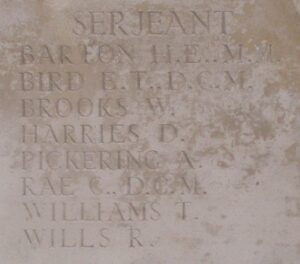
David Thomas Harries, Private, 11822, Welsh Regiment. David was born at Manordilo in 1896, the son of John and Jane Harries. By 1911 the family was residing at 3, Hill Side Villas, Bush Road, Penrhiwceiber, where David and his father worked in a local coal mine, but soon after that the family had moved to 3, Weaverstown, Ammanford. David enlisted at Ammanford into the 8th Battalion, Welsh Regiment soon after the outbreak of war. The battalion formed at Cardiff before moving to Parkhouse, Salisbury Plain to join 40 Brigade, 13th (Western) Division, and in January 1915 converted to become the Divisional Pioneer Battalion. On 15 June 1915 the Division sailed from Avonmouth for Mudros and on 5 August 1915 landed at Anzac, Gallipoli. On the night of 6-7 August, the 8th Welsh advanced from the beaches to Chailak Dere, to support an assault by the New Zealanders at Chunuk Bair. On the morning of 8 August 1915 the 8th Welsh moved forwards to support the Gloucesters and the Wellington Regiment who had begun their attack. The first wave came under intense fire from both flanks and the rear and was mown down. A party of men under Major Yates reached a forward position on the slopes of Chunuk Bair, but could advance no further, and desperate fighting raged throughout the day. David was among over 400 casualties suffered by the 8th Welsh during the day. The 18-year-old has no known grave and is commemorated on the Helles Memorial, Gallipoli.
James Joseph Horner, Private, 2386, Welsh Guards. James was born in 1893, the son of James and Fanny Horner, of 50, Henry St., Battersea, London. James resided at Llandeilo prior to the war, and enlisted at Carmarthen into the Welsh Guards. The Welsh Guards were formed by Royal Warrant on 26 February 1915, moving to France on 17 August 1915, where it joined 3rd Guards Brigade, Guards Division. The Division saw its first major action during the Battle of Loos on 25 September 1915, remaining in the area during the coming months, where they also fought in the subsequent Action of Hohenzollern Redoubt. In July 1916 the Division moved to the Somme, where they fought at the Battle of Flers-Courcelette, and then at the Battle of Morval, capturing Lesboeufs Village. They remained here for the winter, and in March 1917 took part in the advance caused by the German Retreat to the Hindenburg Line. James was wounded at this time, and died on 13 March 1917. He was 23 years old, and is buried at Grove Town Cemetery, Méaulte, France. James is not commemorated locally.
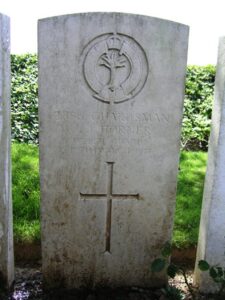
Thomas Wentworth Hughes, Private, 4485, Welsh Regiment. Thomas was the son of Thomas and Jane Hughes of 9, Alan Road, Llandeilo. He enlisted at Carmarthen into the 1/4th Battalion, Welsh Regiment, which was a territorial Battalion, attached to South Wales Brigade. On 17 April 1915 it was attached to 159 Brigade, 53rd Division and in July 1915 sailed for the Mediterranean, landing at Suvla, Gallipoli on 8 August 1915. The Division was almost immediately thrown into a desperate attack, and over the coming days suffered terrible casualties. Thomas was killed in action on 10 August 1915, aged 41. He is commemorated on the Helles Memorial, Gallipoli.
Percy Lloyd Humphreys, Captain, Welsh Regiment. Percy was the son of Cadwallader and Sarah Humphreys, of Tylissa, Llanfair Caereinon, Montgomeryshire. He was a manager of the London City and Midland Bank at Llandeilo prior to the war. Percy was one of the original officers of the 15th Battalion, Welsh Regiment, which was raised as part of the Welsh Army Corps by the Carmarthenshire County Committee. The Battalion fought in some of the major actions of the war, attached to 114 Brigade, 38th (Welsh) Division, after landing in France on 4 December 1915. During the winter and spring of 1916 the Battalion held nearly every section of the British line from Givenchy on the La Bassée Canal to Laventie, about six miles South of Armentières. At the end of May, 1916, the Battalion moved South with the remainder of the 38th (Welsh) Division to the Somme area, in readiness for the First Battle of The Somme, which commenced on 1 July 1916. The 38th Division were tasked with the taking of the infamous Mametz Wood. The first attack on Mametz Wood was on 7 July, when the division lost heavily in ‘Death Valley’ during the advance on the ‘Hammer Head’. The next attack went in on 10 July, and by 14 July the wood was cleared – but at the cost of over 5,000 casualties in the 38th (Welsh) Division. Percy had survived the carnage of Mametz, and the Division were removed from the line, and sent north to Ypres to rebuild. They were at Ypres when the Battle of Third Ypres was opened, and took part in the Battle of Pilckem Ridge, where Percy was killed in Action, on 31 July 1917, aged 35. He is buried at Welsh Cemetery (Caesars Nose), near Ypres.
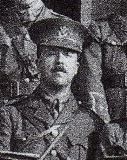
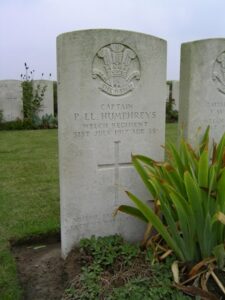
John Hopkin James, Private, 54289, Welsh Regiment. John was the son of William and Eleanor James, of The Tregyb Arms, Ffairfach, Llandeilo. He had enlisted into the 4th Welsh in May 1911, and had attended the annual TA camp every year prior to the outbreak of war. John was posted to Dale with the 4th Welsh in August 1914, and then fought at Gallipoli with the battalion the following year. He was invalided home from Gallipoli, and while home married May Thomas, of Rose Hill, Pentregwenlais, Llandebie. He returned to service, and was posted to France after July 1916, joining the 15th Battalion, Welsh Regiment. The battalion was known as the Carmarthen Pals battalion, and had been in France since December 1915 attached to 114 Brigade, 38th (Welsh) Division. During the winter and spring of 1916 the Battalion held the Fleurbaix Sector, and then moved south to the Somme in June 1916, where they captured Mametz Wood. The Division suffered terrible casualties here, and was withdrawn, via Hebuterne, to positions north of Ypres, at Boesinghe. On 31 July 1917 the Division launched its assault on the Pilckem Ridge, and this is where John was killed in action, on 1 August 1917, aged 23. He is commemorated on the Ypres (Menin Gate) Memorial, Belgium.
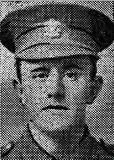
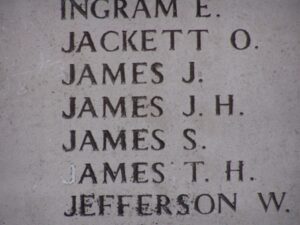
Joseph William Johnson, Private, 27824, Welsh Regiment. Joseph was born at Salford, the son of Joseph and Ann Johnson, of 37, Pimlot Street, Pendleton, Manchester. He resided at Llandeilo prior to the war, and enlisted at Ammanford into the 18th Battalion, Welsh Regiment, which formed at Cardiff in January 1915 as a Bantam Battalion. In July 1915 the Battalion was attached to 119 Brigade, 40th (Bantam) Division, and moved to France in June 1916. Here they moved to the Somme, and fought during the Battle of the Ancre, remaining in the area over the winter of 1916/17. Joseph died on the Somme on 15 January 1917, aged 30, and is buried at Grove Town Cemetery, Méaulte, France. He is not commemorated at Llandeilo.
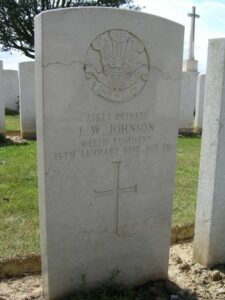
David Charles Jones, Private, S/1410, Rifle Brigade. David was born in Llandeilo, the son of Thomas and Elizabeth Jones. The family later moved to 56, Byng Terrace, Brynhyfryd, Swansea, and David enlisted there on 3 September 1914 into the army. He landed in France on 21 July 1915 with the 12th Battalion, Rifle Brigade, which was attached to 60 Brigade, 20th (Light) Division. The Division had completed concentrating in France by 26 July 1915, and took part in the Battle of Loos, attacking towards Fromelles on 25 September 1915. They moved to Ypres soon after, which is where David was Killed in Action on 12 February 1916, aged 27. He is commemorated on the Ypres (Menin Gate) Memorial, Belgium. David is not commemorated on the memorial in St Teilo’s Church, but at Salem Chapel.
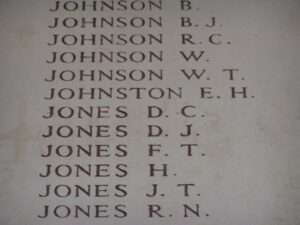
David Thomas Jones, Private, 53640, Welsh Regiment. David was born at Builth, the son of John and Frances Jones. The family moved to the Farmers Arms, Llandeilo around the turn of the century, and David enlisted at Carmarthen into the Pembroke Yeomanry. Sometime in the summer of 1916 he was posted to the 2nd Battalion, Welsh Regiment, which was attached to 3 Brigade, 1st Division, and had been in France since taking part in the retreat from Mons to the Marne. After a hard first winter on the Western Front, the Division fought at the Battle of Aubers in May 1915, and then at the Battle of Loos in September. In June 1916 the Division was on the Somme, and fought throughout the offensive. They followed the German withdrawal to the Hindenburg Line in March 1917 and were then moved to the Flanders Coast to prepare for a planned offensive. However, by this time the Passchendaele Battles had ground to a halt in the mud, and the Division were called to take part in the offensive at Ypres. They fought during the Second Battle of Passchendaele, where the village was finally taken, and remained in Flanders over the winter. The following year saw the focus of the German Spring Offensive hit Flanders, and the Division fought through the desperate battles of Estaires, Hazebrouck and Bethune. David died during this terrible period, on 19 April 1918, aged 27. He is commemorated on the Loos Memorial, France.

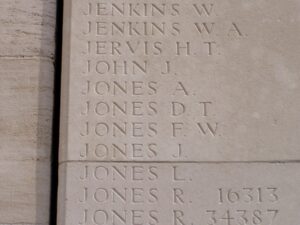
Llewellyn Jones, MM, Lance Corporal, 202827, Royal Welsh Fusiliers. Llewellyn was the son of Timothy and Anne Jones, of Brynywawr, Penybanc, Llandeilo, and enlisted at Llandeilo into the Welsh Regiment. Sometime later he was transferred into the 16th Battalion, Royal Welsh Fusiliers, attached to 113 Brigade, 38th (Welsh) Division. The Division had landed in France during December, 1915 and moved to positions around Armentieres, where they remained until moving south in June 1916, where they famously captured Mametz Wood. The badly depleted Division was then removed from the line, and sent to Ypres, where they remained until the Passchendaele Offensive opened on 31 July 1917. They fought at the Battles of Pilckem and Langemarck, before being withdrawn to Armentieres for the winter. In April 1918 the Division was rushed to the Somme, and took up positions around Aveluy Wood, remaining here for the next few months. The tide of war turned on 8 August 1918, when a gallant victory at Villers-Brettoneux turned the German attacks, and the Allies started pushing the Germans back over the ground they had taken so spectacularly. The Division launched its assault across the River Ancre on 21 August 1918, and began its drive towards the Hindenburg Line. Llewellyn was killed in Action on 8 October 1918, aged 23. He is buried at Bois-Des-Angles British Cemetery, Crevecoeur-Sur-L’escaut, France. He was the holder of the Military Medal.
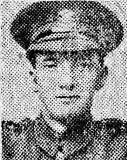
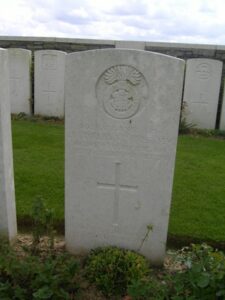
Rhys Herbert Jones, Private, 269834, Notts & Derby (Sherwood Foresters). Rhys was born at Llandeilo, the son of William and Gwenllian Jones. The family later resided at Cwmnantmoel Farm, Brynamman. He enlisted at Mill Hill, Middlesex into the 1/5th Battalion, the Sherwood Foresters, who formed part of 139 Brigade, 46th (North Midland) Division. The Division moved to France in February 1915 and fought at the Hohenzollern Redoubt. The Division was ordered to proceed to Egypt in December 1915 but after arrival, were sent back to France, and moved to the Northern Somme area, where they took part in the main diversionary attack to the Somme Offensive, at Gommecourt. They suffered heavy casualties, and moved south to the Ancre Valley, where they over-wintered, before following the German retreat to the Hindenburg Line in early 1917. They then fought at Hill 70 during the Battle of Arras, and moved north to French Flanders, where they helped repel the German Offensive of Spring 1918. Rhys was wounded during this period, and sadly Died of Wounds on 19 April 1918, aged 37. He is buried at Cambrin Military Cemetery, France. Rhys is not commemorated at Llandeilo.
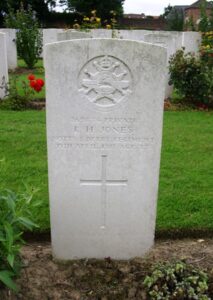
Tom Aneurin Jones, Gunner, 725429, Royal Field Artillery. Tom was the son of James and Anne Jones, of Graian Cottage, Bethlehem, Llandeilo. He was a member of the Territorial Force, and had enlisted at Swansea into the Royal Field Artillery. Tom had served in France with the Royal Field Artillery from 21 November 1915, before being posted to C Battery, 265th Brigade, Royal Field Artillery, which was in Palestine attached to the 53rd (Welsh) Division. Tom became ill and died during the time of the final offensive beyond the Jordan, on 22 October 1918, aged 26. He is buried in Ramleh War Cemetery, Israel. As far as is known, Tom is not commemorated locally.
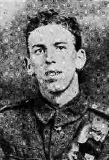
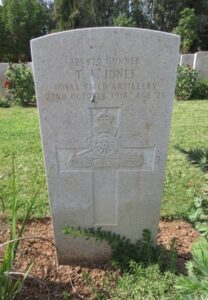
Wilfred David Powell Jones, Private, SPTS/1688, Royal Fusiliers. Wilfred was the son of John and Emma Sarah Jones. The family had lived at Llandeilo for many years before moving to 18, Woodstock Road, Oxford. Wilfred was educated at Llandovery College and was residing in Llandeilo when he enlisted into the army. He was posted to the 23rd Battalion, Royal Fusiliers, which was the Sportsmans Battalion, raised in London on 25 September 1914. On 26 June 1915 they became attached to 99 Brigade, 33rd Division, and moved to France in November 1915. The Battalion then transferred to the 2nd Division along with the rest of 99 Brigade, and moved to Loos to join their new Division. They remained in positions here until July 1916 when they moved to the Somme, where they took part in the Battles of Delville Wood, and the Battle of the Ancre. Wilfred was Wounded on the Ancre, and brought to the Casualty Clearing Station at Puchevillers, where he sadly Died of Wounds on 18 November 1916, aged 31. He is buried at Puchevillers British Cemetery, France. Wilfred is not commemorated at Llandeilo.
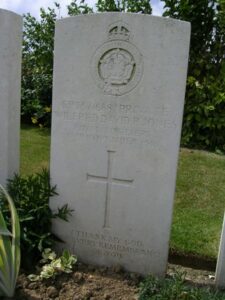
William John Jones, Gunner, 2985, Royal Field Artillery. William was the son of John and Letitia Jones, of Norton Bridge, Pontypridd, Glam, and the Husband of Ethel Mary Jones, of Maerdy Fach, Ffairfach, Llandeilo. He enlisted at Pontypridd into the Royal Field Artillery, and served in their ‘B’ Battery, 122nd Brigade, which was attached to the 38th (Welsh) Division. The Division had landed in France during December 1915 and moved to positions around Armentieres, where they remained until moving south in June 1916, where they captured Mametz Wood in July 1916. The badly depleted Division was then withdrawn from the Somme, and sent to Ypres, where they remained for the next year. On 31 July 1917 the Division fought at the Battle of Pilckem Ridge, and the following Battle of Langemarck. In September the Division moved to Armentieres, and remained here until being moved back to the Somme in April 1918, and took up positions around Aveluy Wood. The tide of war turned on 8 August 1918, when a gallant victory at Villers-Brettoneux turned the German attacks, and on 21 August 1918 the 38th Division crossed the River Ancre, launching its own assault. The Division fought at the breakout of the Battle of Albert, then at Bapaume, Havrincourt and Épehy, and then the Battles of Beaurevoir and Cambrai, where William was gassed. He was brought to the Base Hospital at Etaples, where he sadly died of Wounds on 8 November 1918, aged 26. He is buried there, in Etaples Military Cemetery, France. William is not commemorated at Llandeilo.
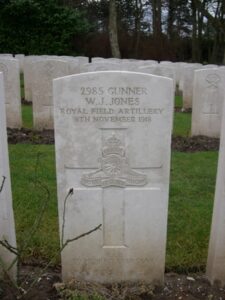
William Morgan Jones, Private, P.S.2250, Middlesex Regiment. William was the son of Daniel and Margaretta Jones. The family had lived at Llandeilo before moving to Penybryn Farm, Abergwili. William had moved to London to work as a Draper prior to 1911, and resided at Shepherd’s Bush. He enlisted on 25 May 1915 into the Middlesex Regiment. William married Louisa Norman Lake while on leave, at St Stephen’s Church, Hammersmith on 26 August 1915. He landed in France on 27 November 1915 with the 16th Battalion, Middlesex Regiment, which was attached to 110 Brigade, 33rd Division. On 25 February 1916 the Battalion moved to GHQ Troops. On 25 April 1916 they were attached to 86 Brigade, 29th Division, which had recently moved to the Western Front from Gallipoli. The Division fought at Beaumont Hamel during the opening of the Battle of the Somme, and then in the latter stages of the Battle of Le Transloy. They then moved to Arras, and fought in the Battle of the Scarpe, where William was killed in Action on 14 April 1917, aged 28. He is commemorated on the Arras Memorial, France.
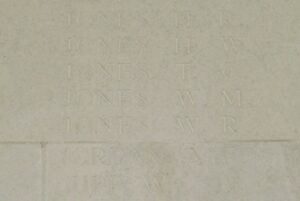
Charlie Valentine Lee, Sergeant, 23111, South Wales Borderers. Charlie was the son of Valentine Henry and Sarah Lee, of 17, New Road, Llandeilo. He enlisted at Wrexham into the Royal Welsh Fusiliers, but subsequently transferred into the 10th Battalion, South Wales Borderers, which was attached to 115 Brigade, 38th (Welsh) Division. The Division had landed in France during December 1915 and moved to positions around Armentieres, where they remained until moving south in June 1916, where they famously captured Mametz Wood in July 1916. The badly depleted Division was then withdrawn from the line, and sent to Ypres, and this is where Charlie was wounded, being shot through the lung. He was brought to the Casualty Clearing Station at Proven, where he died of wounds on 14 October 1916, aged 26, and is buried there, at Mendinghem Military Cemetery, Belgium.
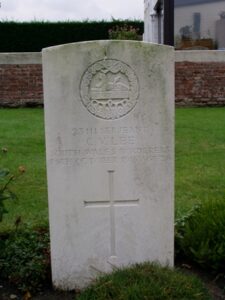
David Harries Lewis, Private, 248018, Royal Fusiliers. David was the son of Thomas and Catherine Lewis, of 5, George Hill, Llandeilo, and the Husband of Mary Ann Lewis, of 39, Towy Terrace, Ffairfach, Llandeilo. He had originally enlisted into the 4th Welsh, but later transferred into the 2/2nd Battalion, Royal Fusiliers, which was attached to 86 Brigade, 29th Division in January 1915. The Division left Avonmouth on 16 March 1915, bound for Egypt, and from there had landed on Gallipoli, via Mudros, on 25 April 1915. They fought throughout the terrible campaign on Gallipoli until their evacuation in January 1916, and had then moved to France, landing in Marseilles on 28 March 1916. The Division fought at Beaumont Hamel during the opening of the Battle of the Somme, and then in the latter stages of the Battle of Le Transloy. They then moved to Arras, and fought in the Battles of the Scarpe during the Arras Offensive, before moving to Ypres, where they fought at the Battles of Langemarck, the Menin Road, Polygon Wood, Broodseinde and Poelcappelle. David was killed in Action at Ypres, on 26 October 1917, aged 28, and is commemorated on the Tyne Cot Memorial, Belgium.
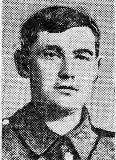
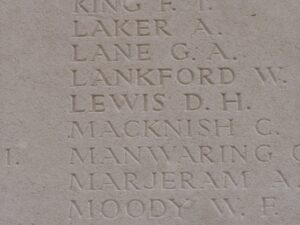
Douglas David Raymond Lewis, Lieutenant, Durham Light Infantry. Douglas was born at Penllergaer on 24 August 1891, the son of Reverend Thomas Phillip Lewis and Jane Lewis, of Llanbedr Rectory, Crickhowell, Breconshire. Jane was the daughter of the Reverend Thomas Davies, of Glanyrafon, Llandeilo. Educated at St. David’s College School in Lampeter, and at Carmarthen Grammar School, Douglas became a teacher at Hoe Grammar School, Plymouth, then at a Private School in Weymouth. He was commissioned on 16 August 1915, and became a Lieutenant with the 8th Battalion, Durham Light Infantry, which was attached to 151 Brigade, 50th Division. Douglas served throughout the Somme Offensive, at Flers-Courcelette, Morval and Le Transloy, and the Battalion then moved to Arras, where they fought in the Battles of the Scarpe, where Douglas was wounded. He died of his wounds on 22 April 1917, aged 25, and is buried at Beaurains Road Cemetery, Beaurains, France.
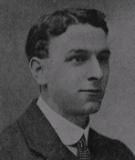
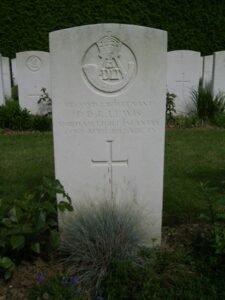
Evan Daniel Lewis, Private, 22703, Welsh Regiment. Evan was the son of Thomas and Eleanor Lewis, of Orfe Villa, Llandeilo. He had served in France with the Welsh Regiment from September 1915 onwards, until being invalided home and posted to the 3rd Battalion, Welsh Regiment. The battalion was used for Garrison duties in the UK, and to supply replacements for front line units on the Western Front. Nothing is known of Evan’s war service, but he died in Kent on 10 March 1919, aged 33, and is buried at Esgardawe Welsh Congregational Chapelyard.
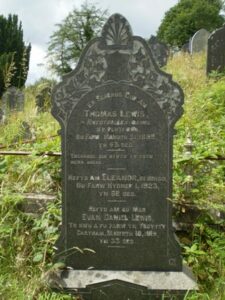
William Lewis, Private, 201247, Welsh Regiment. William was the son of Thomas and Hannah Lewis, of Maesivan Fach, Llandeilo. He enlisted at Llandeilo into the 1/4th Battalion, Welsh Regiment, which formed at Carmarthen in August 1914, as part of South Wales Brigade. On 17 April 1915 it was attached to 159 Brigade, 53rd (Welsh) Division, and in July 1915, the Division was shipped to Egypt. On 9 August 1915, the Division landed at Suvla Bay on Gallipoli, and they remained there for the duration of the campaign, before being evacuated to Egypt in December 1915. After several months spent rebuilding in Egypt, and guarding the Suez Canal, the Division moved into Palestine, where William was wounded soon after the beginning of the campaign. He died of his wounds on 6 March 1917, aged 24, and is commemorated on the Jerusalem Memorial, Israel.
Herbert Dixon Lister, Second Lieutenant, Welsh Regiment. Herbert was the son of Charles and Martha Lister, of Stanley Mills Cottage, Stanley, Wakefield, Yorks, and the Husband of Florence M. Lister, of Redburn Grove, Frizinghall, Bradford, Yorks. He had worked at Llandeilo as a Solicitor prior to the war, and enlisted there into the 4th Battalion, Welsh Regiment, becoming a Sergeant. Herbert was later commissioned on 27 March 1918 into another battalion of the Welsh Regiment and served on the Western front. He was killed in action during the German Spring Offensive in Flanders on 4 September 1918, aged 32. Herbert is commemorated on the Tyne Cot Memorial, Belgium.

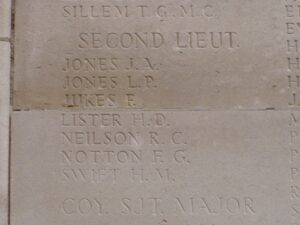
Martin Lloyd, Private, 61528, Royal Welsh Fusiliers. Martin was the son of Henry and Rachel Lloyd, of Dinefwr Farm Yard, Llandyfeusant, and the Brother of Richard Lloyd, of Ardwyn, Cwmgwrach, Neath. He enlisted at Carmarthen into the army, and was posted to France in 1917, where he joined the 14th Battalion, Royal Welsh Fusiliers, who had been on the Western Front since December 1915, attached to 113 Brigade, 38th (Welsh) Division. The Division had captured Mametz Wood in July 1916, and the Pilckem Ridge on 31 July 1917, before being moved to positions around Armentieres. Martin probably joined the battalion here. On 21 March 1918 the German Spring Offensive swept through the British positions around Bapaume and St. Quentin, and the 38th Division was rushed to positions around Aveluy Wood, near Albert. They remained here for the next few months, until launching an attack across the River Ancre on 21 August 1918, and driving towards the Hindenburg Line. Martin was Killed in Action at Longueval on 28 August 1918, aged 28. He is buried at Delville Wood Cemetery, Longueval, France.

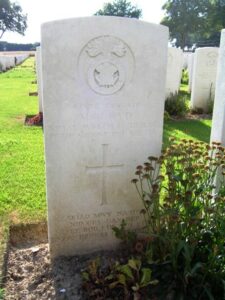
Walter Everard Lloyd, Surgeon Lieutenant, Royal Navy. Walter was born on 7 December 1884, the youngest son of Dr. William Howell Lloyd and of Mrs Harriett Lloyd, of Llandeilo. He was educated at the London Hospital, taking the diplomas of M.R.C.S. and L.R.C.P. London in 1908. Walter joined the Royal Navy on 5 November 1909, and at the beginning of the Great War was serving at Wei Hai Wei, the British Naval China Station Base. He was invalided home towards the end of the war, and died at Llandeilo on 20 March 1919, aged 34. Walter is buried at Llandilo Fawr (St Teilo) Churchyard. As a result of my research his case was sent in to the CWGC on 5 April 2013, and on Thursday 27 June 2013 Walter was officially accepted by them for commemoration, after 94 years of being forgotten.
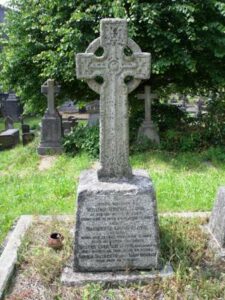
Charles Henry Locke, Lance Corporal, 11144, Welsh Regiment. Charles was born at Birmingham, and enlisted in Carmarthen into the 2nd Battalion, Welsh Regiment, which was sent to France as part of 3 Brigade, 1st Division at the outbreak of war, landing at Havre on 13 August 1914. After the retreat from Mons to the Marne, the Division was moved to Ypres, and stemmed the German attack, during an epic defence at Gheluvelt. After a hard first winter on the Western Front, Charles was Killed in Action on 25 January 1915. He is commemorated on the Le Touret Memorial, Richebourg L’Avoue, France.
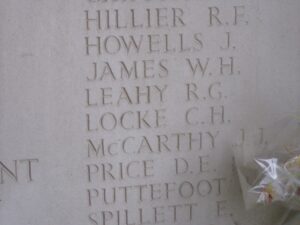
John Marvelly, Engineman, 1734ES, Royal Naval Reserve. John was born at Llandeilo on 12 May 1860, the son of William and Elizabeth Marvelly (nee Thomas). Some years prior to the war he had moved to Milford Haven, where he worked as a fisherman, and lived with his wife, Harriet, at 26, Dartmouth Street, Milford. John was enrolled into the Royal Naval Reserve on 21 January 1915, and trained at HMS Vivid, before being taken on as engineman aboard HM Trawler Lobelia II. John was killed when Lobelia struck a mine off Lough Swilly on 19 April 1917. John was 57 years old, and is commemorated on the Plymouth Naval Memorial, Devon. John is not commemorated at Llandeilo, but on the Milford Haven Cenotaph.
Edward Thomas Mitchell, Sergeant, 58214, Royal Field Artillery. Edward was the son of Edward and Jane Mitchell, of Middlesbrough. He had played professional football for Reading and Swansea prior to the war. Edward enlisted at Scarborough into the army, and was posted to the 117th Battery, 26th Brigade, Royal Field Artillery. He landed in France on 16 August 1914, and would have taken part in the retreat from Mons. Edward returned home on leave in July 1915, and married Gladys Winifred Jones, the daughter of Evan and Frances Jones, of The Farmers Arms, Llandeilo. He rejoined his battery in France, in the Loos sector. Edward was wounded at Loos, and died on 6 January 1916, aged 24. He is buried in Bethune Town Cemetery, France. Edward is not commemorated locally, but is commemorated on the grave of Evan and Frances Jones, at Llandeilo (St. Teilo) Churchyard.
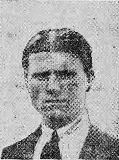
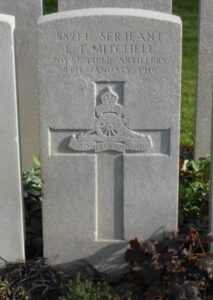
George Morgan, Private, G/89642, Middlesex Regiment. George was the son of Evan James Morgan and Emily Morgan, of 1, North Bank, Llandeilo. George enlisted at Ammanford into the 18th Battalion, Middlesex Regiment, Pioneers to the 33rd Division. The Division moved to France in November 1915, and fought throughout the Somme Offensive the following year, at Albert and Bazentin. Spring 1917 saw them fighting during the Arras Offensive, at the Battles of the Scarpe, and then at Bullecourt. They fought at Third Ypres later in the year, at the Menin Road and Polygon Wood, and remained south of Ypres over the winter. In Spring 1918 they were hit by the German Offensive, and fought at the Battle of Messines, before the fighting retreat to Hazebrouck, Bailleul and Kemmel. The Division were moved south, and fought during the offensive at the Battle of the St. Quentin Canal, and after the breakthrough, at Cambrai and the Pursuit to the Selle. George was taken ill with pneumonia during the final few months of the war, and brought to the Base Hospital at Etaples, where he Died of Sickness on 31 October 1918, aged just 19. He is buried there, at Étaples Military Cemetery, France.
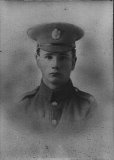
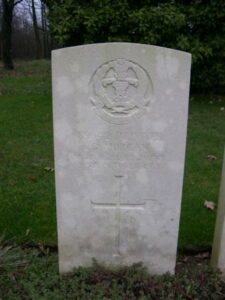
Ralph Lewis Morgan, Second Lieutenant, Welsh Regiment. Ralph was born in Swansea, the son of Joshua and Matilda Morgan. His parents later lived at 37, Brisbane Road, Reading, before retiring to Llandeilo in the 1920’s. Ralph had gone overseas to work after finishing in University, and returned from the Straits Settlements after the outbreak of war to enlist into the Inns of Court Officer Training Corps. He was commissioned into the Welsh Regiment on 17 December 1915, and posted to France on 16 February 1916, joining the 13th Battalion, Welsh Regiment (2nd Rhondda), which was attached to 114 Brigade, 38th (Welsh) Division. Ralph joined the battalion in Flanders prior to its move south to the Somme in June 1916, and took part in the successful attacks on Mametz Wood the following month. The battered division then moved via Hebuterne to Northern France, before moving to positions along the canal bank north of Ypres. On 14 January 1917 the 13th Welsh was holding the trenches along the canal bank when Ralph was killed by a German shell. He was 29 years old, and is buried in Essex Farm Cemetery, Belgium, which lies just behind the west bank of the canal. Although Ralph has no direct ties to Llandeilo himself, his parents are both buried in Llandeilo (St Teilo) Churchyard. He is not commemorated at Llandeilo, except on his parent’s headstone.
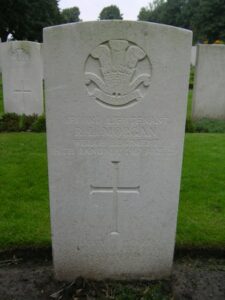
Thomas Owen, Private, R/11521, Kings Royal Rifle Corps. Thomas was the son of John and Mabel Owen, of Garfield House, Llandeilo. He enlisted at Ammanford into the 9th Battalion, King’s Royal Rifle Corps, which formed at Winchester in August 1914, attached to 42 Brigade, 14th (Light) Division. The Division crossed to France in May 1915 and took up positions at Hooge, near Ypres, where they became the first troops to be attacked by Flamethrowers on 2 June 1915. They then fought at Bellewaarde, and moved to the Somme in 1916, fighting at Delville Wood, and Flers-Courcelette. By 21 August the 9th KRRC was moved up to positions near Delville Wood in readiness for an assault on the 24th in order to clear the wood and to establish positions on the Flers road, to the north. Despite a gallant charge against the strongly held German positions, the attack failed and the 9th KRRC battalion suffered 41 men killed 190 wounded and 46 missing during the assault. Thomas was killed in action here on 24 August 1916, aged just 19. He is commemorated on the Thiepval Memorial, France.
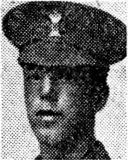
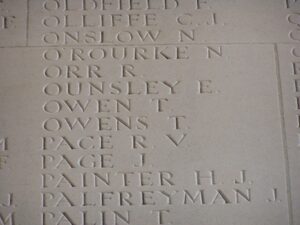
Clive Albert Page, Private, 1679, Welsh Guards. Clive was the son of William and Emmie Page, of 5, Church Street, Monmouth. He lived at 2, Allan Road, Llandeilo prior to the war, working in the town as a Clerk at the Capital and Counties Bank. Clive enlisted at Swansea on 15 June 1915, into the 1st Battalion, Welsh Guards, which was raised after the Royal Warrant of 26 February 1915. After being formed, the Welsh Guards became part of the 3rd Guards Brigade, Guards Division, which formed in France in August 1915. Their first taste of battle was at Loos, before the Guards Division moved to positions near Ypres to rebuild after the heavy losses they had suffered at Loos. Clive joined the Welsh Guards here during November 1915, and the Guards remained here over their first winter in France. Clive was wounded. He was shot in the head while the Welsh Guards were in the line in Flanders on 12 February 1916. Sadly Clive died of his wounds on 13 February 1916, aged just 18, and is buried at Merville Communal Cemetery, France.
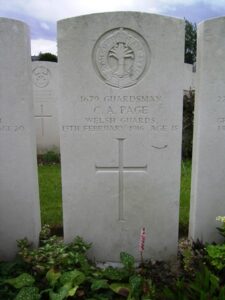
Alfred Parsons, Private, 200923, Welsh Regiment. Alfred was the son of George and Mary Minnie Parsons, of 18, New Road, Llandeilo, and enlisted at Llandeilo into the 1/4th Battalion, Welsh Regiment. On 17 April 1915 it was attached to 159 Brigade, 53rd Division and in July 1915, was shipped to Egypt, before landing at Suvla, Gallipoli on 8 August 1915. They remained here throughout a terrible campaign, which resulted in one stage of the Battalion being temporarily merged with the 1/5th Welsh due to the awful casualties suffered by both. In December, 1915 they were evacuated to Egypt, where the rebuilding of the Battalions began. The Division remained in Egypt until early 1917, guarding the Suez Canal. Alfred was Killed in Action during the initial offensive into Palestine, during the First Battle of Gaza, on 26 March 1917, aged just 20. He is buried in Gaza War Cemetery, Israel.

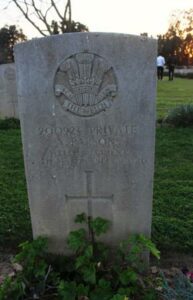
Charles William Morris Perks, Private, 200924, Welsh Regiment. William was the son of Charles Rees Perks and Elizabeth Perks, of Llandeilo. He married Blodwen Ethel Anthony, of 1, Pleasant Villas, Glynhir, Pontardulais while on leave in 1916. William enlisted at Llandeilo into the 1/4th Battalion, Welsh Regiment. On 17 April 1915 it was attached to 159 Brigade, 53rd Division, and in July 1915, was shipped to Egypt, prior to landing at Suvla, Gallipoli on 8 August 1915. They remained here throughout a terrible campaign, which resulted in one stage of the Battalion being temporarily merged with the 1/5th Welsh due to the awful casualties suffered by both. In December, 1915 they were evacuated to Egypt, where the rebuilding of the Battalions began. The Division remained in Egypt until early 1917, guarding the Suez Canal. Early in 1917 the Division invaded Palestine, and fought through the three Battles of Gaza, and moved towards Jerusalem, where William was Killed in Action on 3 November 1917, aged 23. He is buried in Beersheba War Cemetery, Israel.
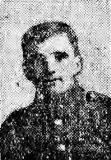
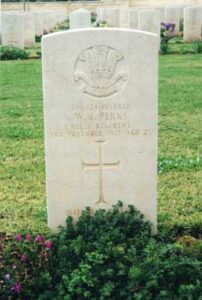
Patrick John Potter, Lance Corporal, 3000, Army Pay Corps. Patrick was the son of James and Ellen Potter, of Bow, London. He married Alice Jones, the daughter of John and Frances Jones, of Llandeilo prior to the war, and the couple ran the Birchgrove Hotel, at Llansamlet. Patrick served with the Army Pay Corps, and was posted to the Pay Office at Cairo. He survived the war but succumbed to sickness in Egypt on 19 March 1919, aged 32, and is buried in Cairo War Memorial Cemetery, Egypt. He is not commemorated at Llandeilo, but on the grave of his in-laws at Llandeilo (St Teilo) Churchyard.
Albert Walter Powell, Private, 204617, Royal Welsh Fusiliers. Albert was born on 2 March 1899, the son of Harry and Sarah Jane Powell, of 2, New Vauxhall Terrace, Birmingham. He lived at Cwmaymlyn Farm, Bethlehem prior to the war and enlisted at Llandeilo on 9 February 1915 into the 6th Battalion, Welsh Regiment. His service papers show that he suffered from disciplinary problems, even while on active service in France. Albert had served in France before being found to be underage and posted to the 2/4th Battalion, Royal Welsh Fusiliers in May 1917. The battalion was attached to 203 Brigade, 68th Division at Northampton, then moved to Bedford in July 1915, Aldeburgh in November 1916 and Henham Park (Halesworth) in May 1917. Albert committed suicide at Chelmsford Detention Barracks on 5 July 1917, aged just 18. He is buried in Springfield (Holy Trinity) Churchyard, Chelmsford. Albert is not commemorated at Llandeilo.
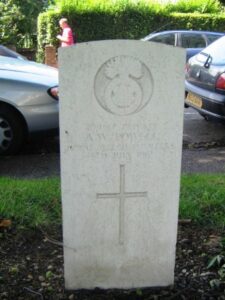
George Price, Private, 20593, Grenadier Guards. George was born at Caerwent. He enlisted at Newport into the Grenadier Guards, and was posted to their 2nd Battalion, which was attached to the 4th Guards Brigade, 2nd Division at the outbreak of war, and swiftly moved to France, taking up positions around Mons. Here, they fought at the opening Battle of the War, and in the epic retreat south through Landrecies and Villers-Cotterets to the Marne, where the German attack was halted. The Germans then withdrew north, and the BEF met them again at the Battle of the Aisne. The Division then moved north to Ypres, and fought through First Ypres, and then fought at the Battle of Festubert in November 1914. They then spent their first winter in Flanders. On 20 August 1915 the Battalion transferred to the newly formed 1st Guards Brigade, Guards Division, and the Guards Division saw their first action at the Battle of Loos in September, 1915. The following year saw them move south, and they fought at the Battle of the Somme, at Flers-Courcelette and Morval, where George was wounded. He Died of Wounds on 17 September 1916, and is buried at Bronfay Farm Military Cemetery, Bray Sur Somme, France. His ties to Llandeilo are not clear but the Carmarthen County War Memorial roll shows his name and unit and this is the only matching man.
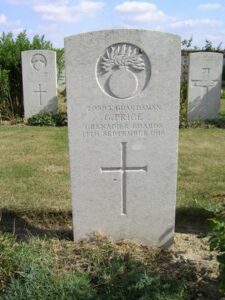
Philip Pritchard, Private, 19976, Welsh Regiment. Philip was born in Llandeilo, the son of Thomas and Rachel Pritchard. The family moved to his father’s native Brecon soon afterwards and Philip became a bricklayer. After leaving prison he enlisted at Llandovery under the false name of Philip Richards into the 15th Battalion, Welsh Regiment, which became known as the Carmarthen Pals. The Battalion trained at Rhyl, before moving to France in December 1915 attached to 114 Brigade, 38th (Welsh) Division. The Division had moved to positions around Armentieres, where they remained until moving south in June 1916, where they famously captured Mametz Wood in July 1916. The badly depleted Division was then removed from the line, and sent to Ypres, where they remained until the Passchendaele Offensive opened in June 1917. Philip was killed during the lead up to the assault on Pilckem Ridge, on 28 July 1917. He is buried at Bard Cottage Cemetery, Belgium. Philip is not commemorated at Llandeilo.
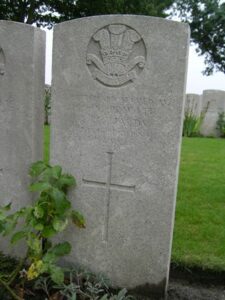
William Rees, Private, 53849, Welsh Regiment. William was born in Llandeilo, and enlisted at Abergavenny into the Monmouth Regiment, and later transferred to the 9th Battalion, Welsh Regiment, who were attached to 58 Brigade, 19th (Western) Division. The Division crossed to France in July 1915, and saw its first action at the Battle of Loos. They then moved to the Somme in 1916, and attacked on the second day of the Offensive, capturing the village of La Boisselle, and remained on the Somme throughout the rest of 1916, fighting at Pozieres and the Ancre, where William was Killed in Action on 15 November 1916. He is commemorated on the Thiepval Memorial, France. William is not commemorated at Llandeilo.
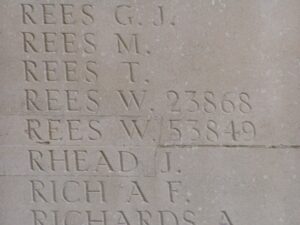
William Simon Rees, Private, 5962, Royal Warwickshire Regiment. William was the son of James and Hannah Rees, of 2, Railway Terrace, Ffairfach, Llandeilo, and enlisted at Llandeilo into the Welsh Regiment. He subsequently transferred to the 2/7th Battalion, Worcester Regiment, which were attached to 183 Brigade, 61st Division from August 1915 onwards, and left for the Western Front on 21 May 1916. They saw their first action at the Battle of Fromelles on 19 July 1916. It was a disastrous diversion for the Somme attack, with the 5th Australian Division and the 61st Division forced to advance across open ground into heavy machine-gun fire. William was Killed in Action that day, aged just 21. He is commemorated on the Loos Memorial, France. He is possibly one of the men buried in the mass graves which were excavated at Fromelles several years ago.
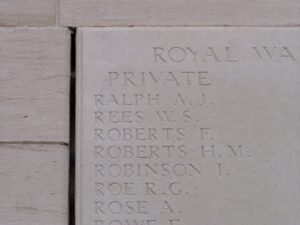
Benjamin Aneurin Roberts, Private, 7002, South African Infantry. Benjamin was the son of Edward Aneurin and Edith Jane Roberts, of Cambrian House, Llandeilo. He had migrated to South Africa prior to the war with his aunt and uncle, Charles Octavius Oxenham and Marian Oxenham in 1913, and he enlisted at Transvaal into the 2nd Transvaal Scottish on 16 October 1914. Released from service on 7 August, he enlisted into 4th S.A.I. Battalion on 8 August 1915. The Battalion was part of the South African Brigade, which moved to France in April 1916 and was attached to the 9th (Scottish) Division. They were stationed at the time near Vimy, north of Arras, which is where Benjamin was sadly Killed in Action on 24 August 1916, aged 18. He is buried in Zouave Valley Cemetery, Souchez. His cousin, Wyndham Oxenham, also fell.

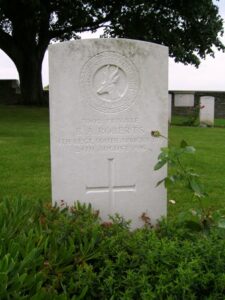
George Roberts, Private, 54389, Welsh Regiment. George was living in Chelsea prior to the outbreak of war, and was the son of Emily Louisa Roberts. He enlisted at Llandeilo into the army and was posted to the 16th Battalion, Welsh Regiment, which had been formed in Cardiff in November 1914, and became attached to 115 Brigade, 38th (Welsh) Division, landing in France during December 1915. The Division moved to positions near Armentieres, where they remained until moving to the Somme, where they captured Mametz Wood during July 1916. It took almost a week for the Division to capture the wood, at a great cost in lives, and they were taken out of action and moved to Ypres to rebuild. Here they remained for almost twelve months, until the Battles of Third Ypres began, and the Division took part in the Battle of Pilckem and the Battle of Langemarck. George was Killed in Action soon after, on 27 August 1917. He is commemorated on the Tyne Cot Memorial, Belgium. George is not commemorated at Llandeilo.
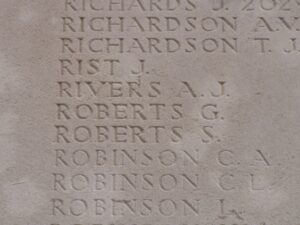
Walter Rochford, Driver, 3585, Royal Field Artillery. Walter was born in London, the son of James and Elizabeth Rochford. He married Anne Davies, of Kenwyn Cottage, Ffairfach, Llandeilo just after the declaration of war. Walter enlisted at Ammanford into the Royal Field Artillery, and served with their 84th Brigade, which was attached to the 18th (Eastern) Division. The Division had been on the Western front since landing in Boulogne on 25 May 1915. They fought during the Battle of the Somme at Albert, Bazentin, Delville Wood and the Ancre, and followed the German withdrawal to the Hindenburg Line in March 1917. They then fought during the Arras Offensive, and then moved to Ypres, taking part in the Battles of Third Ypres. Walter was wounded during Third Ypres, and sadly Died of Wounds on 9 October 1917. He is buried in Dozinghem Military Cemetery, Belgium. His Brother in law, Daniel Davies also fell in the Great War.
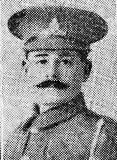
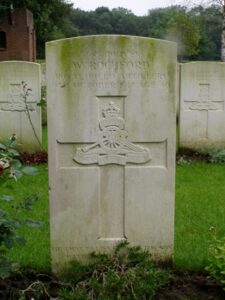
George Edward Scott, Private, 3016, Welsh Regiment. George was born at Bristol, the son of John and Mary Ann Scott. By 1901 the family had moved to 4, Bank Buildings, Llandeilo, where George and his brothers and sisters were educated. By the outbreak of war the family had moved to 37, Victoria Street, Llandovery, and George enlisted at Llandovery into the 1/4th Battalion, Welsh Regiment. On 17 April 1915 the battalion was attached to 159 Brigade, 53rd (Welsh) Division, and in July 1915, was shipped to Egypt, preparatory to landing at Suvla, Gallipoli on 8 August 1915. George was wounded soon after. He was evacuated to a Hospital Ship anchored off-shore, but sadly Died of Wounds at sea on 14 August 1915. He is commemorated on the Helles Memorial, Gallipoli. His brother John had been killed just three days earlier.

John Scott, Sergeant, 3055, Welsh Regiment. John was born at Bristol, the son of John and Mary Ann Scott. By 1901 the family had moved to 4, Bank Buildings, Llandeilo, where John and his brothers and sisters were educated. By the outbreak of war the family had moved to 37, Victoria Street, Llandovery. John married Edith Atkins, of Llandebie in 1906, and the couple set up home at 59, Gorsddu Road, Penygroes. He enlisted at Llandeilo into the 1/4th Battalion, Welsh Regiment, which was attached to 159 Brigade, 53rd (Welsh) Division, and sailed in July 1915 for Egypt. On 8 August 1915 the Division landed at Suvla Bay, Gallipoli, and John was Killed in Action on 11 August 1915, aged 29, during the Battle of Sari Bair. He is commemorated on the Helles Memorial, Gallipoli. His brother George died three days later.

John Scott, Private, 20102, Welsh Regiment. John was the son of George and Elizabeth Scott, of Kingswood Bristol, and the Husband of Mary Ann Scott, of 37, Victoria Street, Llandovery. He resided at Burry Port prior to the war, and enlisted at Llanelli into the 1/4th Battalion, Welsh Regiment. The Battalion had been formed at Carmarthen during August 1914 and were to become part of 159 Brigade, 53rd (Welsh) Division. The Division left for the Mediterranean during July 1915 but John remained at home, in Hospital at Aberavon, suffering from illness. He died there on 3 September 1915, aged 50, and is buried at Aberavon (St. Mary) Church Cemetery. Two of his sons also fell, George and John Scott.

Thomas Smith, Private, 52689, Welsh Regiment. Thomas was born at Leicester. He resided at Llandeilo prior to the war, and enlisted at Cardiff into the army. He was posted to the 1/5th Battalion, Welsh Regiment, which was attached to 159 Brigade, 53rd (Welsh) Division, and was sent to join them in Egypt, where they were rebuilding after being withdrawn from Gallipoli. Edgar had embarked at Marseilles aboard the HMT Transylvania. She was a defensively armed merchant cruiser that had been requisitioned by the Royal Navy, and had been used in the Mediterranean for transporting troops and supplies. It is unknown whether Thomas was rejoining the Battalion after leave, or after recovering from wounds, but sadly the Transylvania was torpedoed on 4 May 1917, by the German U-boat U63, 2½ miles South from Cape Vado, Gulf of Genoa, Italy. She sank with terrible losses that day. Thomas went down on the ship, and so is commemorated on the Savona Memorial, Italy.
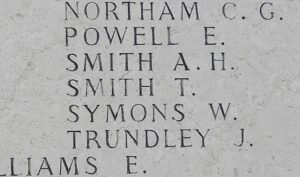
William Stockhall, Private, 21924, Kings Own Scottish Borderers. William was the brother of Henry Alexander Stockhall, of Maesycastell, Cwmdu, Llandeilo. He enlisted at Caerphilly into the 2nd Battalion, King’s Own Scottish Borderers, attached to 13 Brigade, 5th Division. The Division landed at Le Havre on 15 August 1914 and fought at the Battle of Mons, and at Le Cateau, before moving south to the Marne, where the BEF held the German advance. The Germans retreated to the Aisne, where the BEF met them in Battle again, before the 5th Division were posted to Flanders. Here, they fought at the Battles of La Bassée and Messines in 1914, and through First Ypres, and in 1915 captured Hill 60 during Second Ypres. March 1916 saw the Division move to positions near Vimy, and they then moved south to the Somme in July, where they fought at High Wood, where William was Killed in Action on 30 July 1916, aged 18. He is commemorated on the Thiepval Memorial, France. William is not commemorated at Llandeilo.
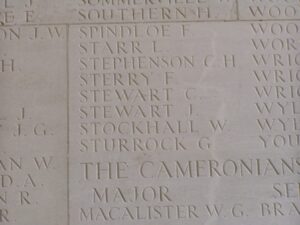
Adolphus Thomas, Private, 2591, Welsh Guards. Adolphus was the son of Lewis and Mary Thomas, of White Lion Hotel, Llandeilo. He was the local postman at Llandeilo prior to the war, and enlisted at Ammanford into the 1st Battalion, Welsh Guards on 9 December 1915. The Welsh Guards were raised after the Royal Warrant of 26 February 1915. After being formed, they became part of the 3rd Guards Brigade, Guards Division, which was formed in France in August, 1915. Their first taste of battle was at Loos, and they then moved to Ypres to rebuild their strength after the fierce fighting there. The Guards remained here until July 1916, when the Division moved to the Somme, and fought at the Battles of Flers-Courcelette and Morval. The Guards followed the German withdrawal to the Hindenburg Line in March 1917. They then moved to Ypres, prior to taking part in the Battle of Third Ypres. Adolphus was wounded by multiple shrapnel wounds while the Welsh Guards were in the line at Ypres. He died of wounds that same day, on 15 July 1917, aged 26. Adolphus is buried at Canada Farm Cemetery, Belgium. His brother was also serving with the colours in Salonika.
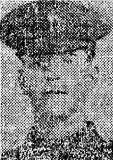
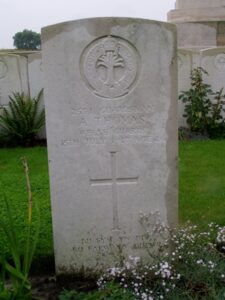
Alfred Thomas, Private, 4226, Welsh Regiment. Alfred was the husband of Mary Anne Thomas, of Mile End, Llandeilo. He enlisted at Llandeilo into the 1/4th Battalion, Welsh Regiment. The Battalion formed part of 159 Brigade, 53rd (Welsh) Division, and sailed for Egypt in July 1915, preparatory for landing at Suvla, Gallipoli on 8 August 1915. It was at Gallipoli, during the Attack on Scimitar Hill, that Alfred was killed in action on 10 August 1915. He is commemorated on the Helles Memorial, Gallipoli.
Arthur Thomas, Private, 11847, Royal Army Medical Corps. Arthur was the son of William and Margaret Thomas, of Towy Terrace, Ffairfach, Llandeilo. He had served during the Boer War in South Africa from 1900 to 1901. At the outbreak of the Great War, Arthur enlisted at Carmarthen into the Royal Army Medical Corps, and was posted to the 33rd Company, attached to the 11th (Northern) Division. On 1 Jul, 1915 the Division sailed from Liverpool, and arrived at Alexandria, before moving via Mudros to Gallipoli, landing on 7 August 1915 at Suvla Bay. The Division fought throughout the campaign on Gallipoli, until being evacuated to Egypt on 21 December 1915. In July 1916 they were moved to the Western Front, but Arthur remained in Egypt with his Company, which is where he sadly died of Sickness on 22 April 1917, aged 37. He is buried at Cairo War Memorial Cemetery, Egypt.
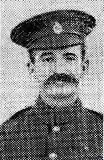
David Richard Thomas, Private, 2023, Pembroke Yeomanry. David was the son of David and Mary Anne Thomas, and the husband of Mary Thomas, of the White Lion, Llandeilo. He had enlisted at Llandeilo into the Pembroke Yeomanry. The various squadrons of the Pembroke Yeomanry assembled for war in August 1914 attached to the South Wales Mounted Brigade. Sadly, David died just after mobilisation, on 3 November 1914, aged 44, and is buried at Llandeilo Fawr (St. Teilo) Churchyard. Many thanks to W. Stuart Davies for the photograph.
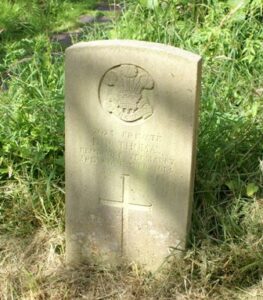
Herbert Pritchard Thomas, Private, 53067, Royal Welsh Fusiliers. Herbert was the son of William and Jane Thomas, of Llandeilo, and the Husband of Mabel Thomas, of 1, Standard Villa, Tre-Thomas, Bedwas, Monmouth. He enlisted at Maesteg into the 1/5th Battalion, Royal Welsh Fusiliers, attached to 158 Brigade, 53rd (Welsh) Division. The Division landed at Suvla Bay on 8 August 1915 and fought there until evacuation in December 1915 after suffering terrible casualties. They then moved to Egypt, where they reformed, and began the move into Palestine in early 1917. Herbert was aboard the Troopship HMT Transylvania when she was torpedoed in the Mediterranean on 4 May 1917, and sank. Herbert was 37 years old when he died that day. His body must have been recovered from the sea, and he is buried at Oneglia Town Cemetery, Italy.
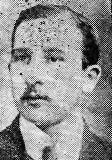
Norman Thomas, MM, Sergeant, R/3758, Kings Royal Rifle Corps. Norman was the son of William and Mary Thomas, of 50, Rhosmaen Street, Llandeilo. He enlisted with his brother Alfred at Ammanford into the 11th Battalion, Kings Royal Rifle Corps, which was attached to 59 Brigade, 20th (Light) Division. The Division moved to France in June 1915, and moved to positions near Fromelles, where they took part in a diversionary attack for the Battle of Loos on 25 September 1915. They fought at the Battle of Mount Sorrel on 13 June 1916 alongside the Canadians, and then moved to the Somme, fighting at Delville Wood, Guillemont, Flers-Courcelette, Morval and Le Transloy, before following the German withdrawal to the Hindenburg Line in March 1917. Later that year they fought at Third Ypres, at Langemarck, the Menin Road and Polygon Wood, and then moved south, where they fought in the Battle of Cambrai from November 1917 onwards. Norman was reported as missing during the Battle of Cambrai on 30 November 1917, and was thought to have been taken prisoner by the Germans. No trace of him was ever found. He was 31 years old, and is commemorated on the Cambrai Memorial, Louverval, France. It is not known at the moment where Norman earned his Military Medal.
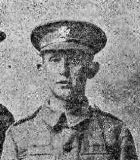
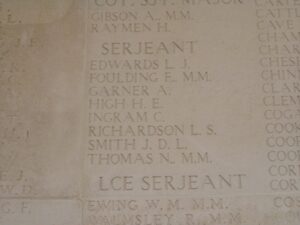
Oswald Thomas, Private, 22650, Welsh Regiment. Oswald was the son of Mr. Francis Thomas, of Swansea, and the Husband of Adela Thomas, of 476, Upper Richmond Road, Putney, London. He was an auctioneer at Llandeilo prior to the war and enlisted at Swansea into the 11th Battalion, Welsh Regiment, which had formed at Cardiff in September 1914. The battalion was known as the Cardiff Pals, and was attached to 67 Brigade, 22nd Division. They crossed to France in September 1915, but a month later were sent to Salonika, and on 27 October left Marseilles. The Division completed concentrating in Salonika in November 1915, and remained in the theatre for the duration of the war, fighting at the Battles of Horseshoe Hill, Machukovo, and the Battles of Doiran. Oswald was Killed in Action on 29 September 1917, aged 29, and is buried at Karasouli Military Cemetery, Salonika.
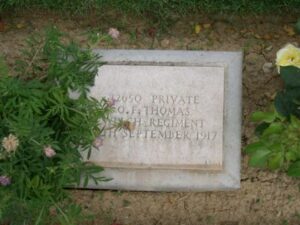
William Thomas, Private, 1298, Welsh Guards. William was the son of John and Margaret Thomas, of Penwaun, Capel Isaac, Llandeilo. He had originally enlisted into the 2/4th Battalion, the Welsh Regiment, the local Territorial unit, but had been given special permission to enlist at Kingston, Surrey into the 1st Battalion, Welsh Guards on 1 May 1915. The Welsh Guards were raised after the Royal Warrant on 26 February 1915. After being formed, they became part of the 3rd Guards Brigade, Guards Division, which was formed in France in August 1915, and saw their first action at Loos. The Guards Division then moved to positions near Ypres to rebuild after the terrible casualties they suffered at Loos, before fighting on the Somme during the autumn of 1916. The Guards Division moved to positions north of Ypres in 1917. William was wounded soon after the move to Ypres, when the Welsh Guards were in the line near the Canal Bank at Boesinghe. He died of his wounds the following day, on 3 July 1917, aged 22, and is buried at Brandhoek Military Cemetery, Belgium. His brother Enoch Thomas served with the Brecknock Battalion, South Wales Borderers.
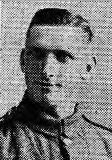
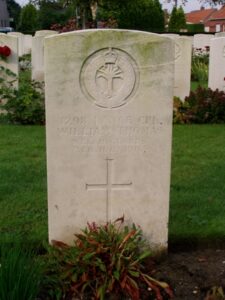
Tom Trowill, Private, 33934, Welsh Regiment. Tom was born in Danthorpe, Yorkshire, the son of John and Mary Ann Trowill, but resided prior to the war at Llandeilo. He enlisted at Ammanford into the 8th Battalion, Welsh Regiment, attached to 40 Brigade, 13th (Western) Division, and became the Pioneer Battalion to the Division in January 1915, prior to moving to Gallipoli. The Division landed at Cape Helles during July 1915 and fought on the Peninsula until being evacuated in January 1916 to Egypt. From here, they moved to Mesopotamia, to attempt to relieve the besieged British Troops in Kut, but the expedition failed. They remained in Mesopotamia however, eventually driving out the Turks, but on 11 August 1917, Tom died of sickness. He was 37 years old and is buried at Basra War Cemetery, Iraq. Tom is not commemorated at Llandeilo.
Llewellyn Walters, Private, 75524, Royal Welsh Fusiliers. Llewellyn was the son of Mary Walker, of 2, Brisken Villas, Llandeilo. He enlisted at Pontypridd into the army, and was posted to France in the summer of 1918 to join the 14th Battalion, Welsh Regiment, which had been on the Western Front since December 1915 attached to 114 Brigade, 38th (Welsh) Division. The Division was at Aveluy Wood, on the Somme from April 1918, and they remained here for the next few months, desperately battling to stem the German advance. The tide of war turned on 8 August 1918, when a gallant victory at Villers-Brettoneux turned the German attacks, and the Allies started pushing the Germans back over the ground they had taken so spectacularly. The Division fought at the breakout of the Battle of Albert, then at Bapaume, Havrincourt and Épehy, and then the Battles of Beaurevoir and Cambrai, before moving towards the Selle and the Sambre, where another Battle was fought. Llewellyn was Killed in Action at the Battle of the Sambre on 21 October 1918, aged 25, and is buried in Highland Cemetery, Le Cateau, France.
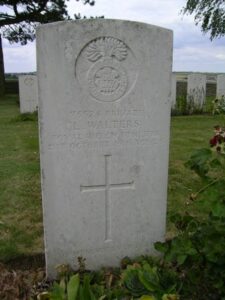
Edgar Frederick Watts, Sergeant, 9412, South Wales Borderers. Edgar was born in Brecon, the son of Edgar Frederick and Mary Anne Watts. At the turn of the century the family moved to 15, Railway Terrace, Llandeilo. Edgar had enlisted into the 1st Battalion, South Wales Borderers prior to 1911. The battalion moved to France at the outbreak of war, as part of 3 Brigade, 1st Division. They had remained on the Western Front throughout the war, and had fought in almost every major Battle that had been fought along the Western Front, and at the end of the war were selected to be part of the Army of Occupation stationed at Bonn. Sadly, Edgar Died of Pneumonia in Germany on 3 March 1919, aged 29. He had survived all of the bloodshed of the conflict, only to fall to illness, and is buried at Cologne Southern Cemetery, Germany. His brother William also fell.
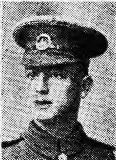
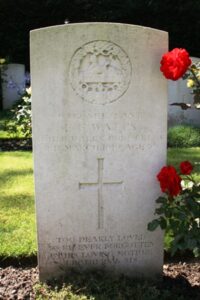
William Arthur Watts, Private, 88941, King’s Liverpool Regiment. William was the son of Edgar Frederick and Mary Anne Watts, of 5, Railway Terrace, Llandeilo. He enlisted at Carmarthen into the army. Sometime in 1917 he was posted to the 7th Battalion, King’s Liverpool Regiment, which had been in France since March 1915, attached to 6 Brigade, 2nd Division. William probably saw his first action during Third Ypres, at the Battles of Pilckem and the Menin Road, and moved to Cambrai by November, where they fought during the Battle of Cambrai. They were decimated during the German counter-attacks on Cambrai, and moved to Givenchy and Festubert to recover, but were caught here when the German Offensive was focussed on Flanders, and made a name for themselves at the Battle of Estaires. William was Killed in Action here, on 11 April 1918, aged just 20, and is commemorated on the Loos Memorial, France. His brother Edgar also fell.
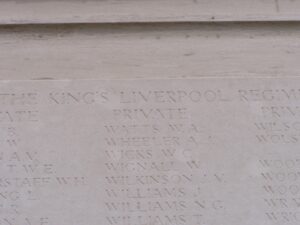
Edgar Williams, Company Quarter Master Sergeant, 200675, Welsh Regiment. Edgar was the son of Richard and Margaret Williams, of 24, New Road, Llandeilo. He enlisted at Swansea into the 1/4th Battalion, Welsh Regiment, which formed part of South Wales Brigade. On 17 April 1915 it was attached to 159 Brigade, 53rd (Welsh) Division, and in July 1915, was shipped to Egypt, preparatory to landing at Suvla, Gallipoli on 8 August 1915. After a terrible time at Gallipoli, the Division was evacuated in December 1915, and moved to Egypt, where they rebuilt. In 1917 they moved into Palestine, and remained there for the duration of the war. Edgar had embarked at Marseilles aboard the HMT Transylvania. She was a defensively armed merchant cruiser that had been requisitioned by the Royal Navy, and had been used in the Mediterranean for transporting troops and supplies. It is unknown whether Edgar was rejoining the Battalion after leave, or after recovering from wounds, but sadly the Transylvania was torpedoed on 4 May 1917 by the German U-boat U63 in the Gulf of Genoa, Italy. She sank with terrible losses that day. Edgar was 30 years old when he drowned that day, and is commemorated on the Savona Memorial, Italy.
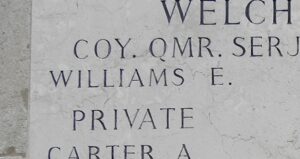
John Williams, Private, 42196, Suffolk Regiment. John was the son of John and Catherine Williams, of Brynberllan, Rhosmaen, Llandeilo. He had worked at the National and Provincial Bank at New Quay early in the war, but enlisted in 1917 into the Training Reserve. He was posted from there to the 12th Battalion, Suffolk Regiment, which was attached to 121 Brigade, 40th (Bantam) Division. The division had been in France since June 1916, and had fought on the Somme that year. It followed the German withdrawal to the Hindenburg Line in March 1917 and later that year fought at the Battle of Cambrai, where the division helped capture Bourlon Wood. After remaining in the area for the winter, the division was caught up in the Battle of St. Quentin, the German Spring Offensive, which began on 21 March 1918, and after suffering terrible casualties, was pushed back past Bapaume towards the old Somme Battlefields of 1916. The division was withdrawn from the line, and sent to Flanders, but was caught again when the Germans attacked here on 9 April 1918. John was killed in action during the chaotic fighting that followed the dawn attack that day, and was initially reported as missing. It was some time before his parents heard news of his death after receiving a letter from a comrade, who confirmed he had been killed on 9 April 1918. The 19 years old has no known grave and is commemorated on the Ploegsteert Memorial, Belgium.
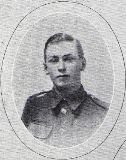
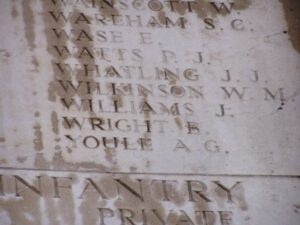
William Griffith Williams, Private, 48411, Welsh Regiment. William was the son of Evan and Kate Williams, of Llandeilo, and enlisted at Bridgend into the 11th Battalion, Welsh Regiment, which formed at Cardiff in September 1914 and became known as the Cardiff Pals, attached to 67 Brigade, 22nd Division. They crossed to France in September 1915 , but a month later were sent to Salonika, and on 27 October left Marseilles. The Division completed concentrating in Salonika in November 1915, and remained in the theatre for the duration of the war, fighting at the Battles of Horseshoe Hill, Machukovo, and the Battles of Doiran. William sadly Died of Pneumonia in Salonika on 19 June 1917, aged 23, and is buried at Mikra British Cemetery, Kalamaria.
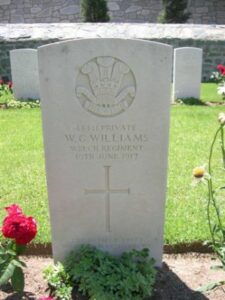
William Willoughby, Private, 18540, East Lancashire Regiment. William was born at Warwick, but had worked as a farm labourer at Ffrwdwen, Capel Isaac, Llandeilo for several years prior to the war. He enlisted at Carmarthen into the 4th Battalion, Welsh Regiment, but was transferred to the 6th Battalion, East Lancashire Regiment, which was attached to 38 Brigade, 13th (Western) Division. William had served at Gallipoli with the battalion from 1 August 1915, and was invalided home at some time, after becoming ill. He died in hospital at Liverpool on 22 June 1916, aged 22, and is buried in Liverpool (Kirkdale) Cemetery. William is not commemorated locally.
George William Wilson, Corporal, 267418, Seaforth Highlanders. George was the son of Mansel and Elizabeth Wilson, of Wyvern, Latimer Road, Llandeilo, and he enlisted at Ammanford into the army, and was posted to the 6th Battalion, Seaforth Highlanders, attached to 152 Brigade, 51st (Highland) Division. At the end of April 1915 the Division crossed to France, and were moved to defend Ypres, where the Germans had attacked using Poison Gas for the first time. They fought here, at Second Ypres, until moving to Estaires on 19 May. They then fought at the Battle of Festubert, and also at Givenchy that year, and late in June moved to positions in the Somme Valley. They remained here for over a year, and took part in several of the Somme Battles of 1916, most notably capturing Beaumont Hamel during the Battle of the Ancre. They remained near Courcelette throughout the winter of 1916/17, and then moved to Arras, where they fought in the Battles of the Scarpe, and the Capture of Rouex. In June they moved north, back to Ypres, where they fought at the Battles of Pilckem, Langemarck and the Menin Road, and were then brought into action during the Battle of Cambrai in November, 1917 onwards. They remained here until 21 March 1918 when the German Spring Offensive swept through the area, and after suffering terrible casualties from a German Gas attack, retreated towards Bapaume. On 1 April 1918 the badly depleted Division were relieved, and moved to Bethune to recover, but the Germans attacked here on 9 April, during the Battle of the Lys, and George was Killed in Action the very next day, on 10 April 1918. He was just 20 years old, and is commemorated on the Loos Memorial, France. His brother Henry also fell.
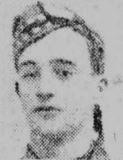
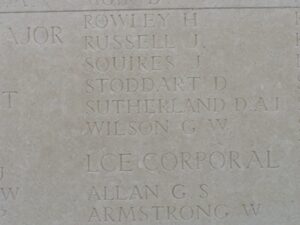
Henry George Wilson, Private, 201822, South Staffordshire Regiment. Henry was the son of Mansel Wilson and Elizabeth Wilson, of Wyvern, Latimer Road, Llandeilo, and the Husband of Mary Ada Wilson, of 38, Seddon Road, Garston. Liverpool. He enlisted at Walsall into the 7th Battalion, South Staffordshire Regiment, which was part of 33 Brigade, 11th (Northern) Division, and sailed from Liverpool in July 1915, for Gallipoli. They landed at Suvla Bay on 7 August 1915 and fought there until evacuating on 21 December 1915 to Egypt. In July 1916 the Division moved to the Western Front, and fought on the Somme at Flers-Courcelette, and the Ancre. They moved to Ypres the following year, and fought at the Battle of Messines, then at Langemarck, Polygon Wood, Broodseinde and Poelcappelle during Third Ypres. Henry was killed in action in Flanders on 21 March 1918, aged 27. He is buried at Philosophe British Cemetery, Mazingarbe, France. His brother George also fell.
